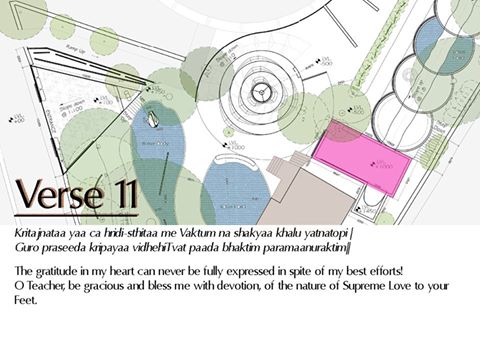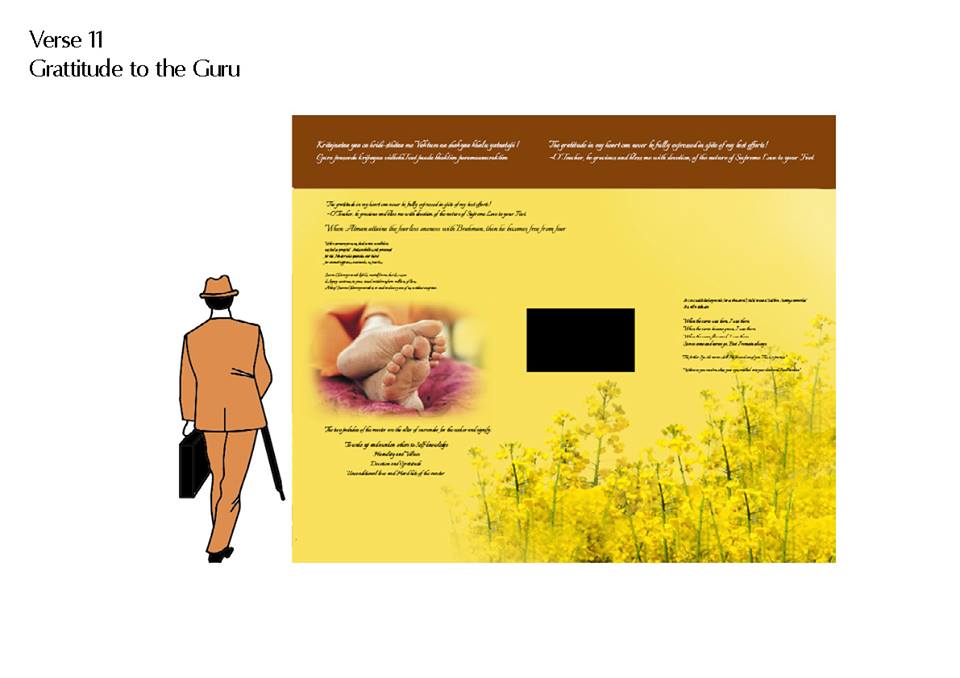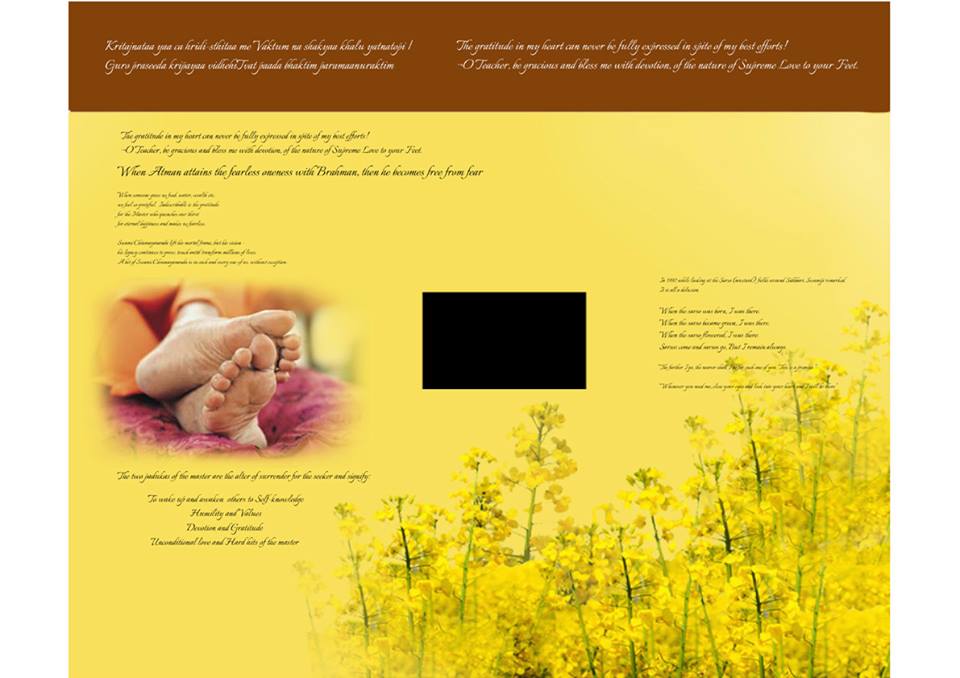• What is the purpose of life, achieving which one is fulfilled?
• How can i discover and dedicate myself to a Higher Vision?
• What is the best way to serve?
• What is Vedanta’s need & importance in my life?
• What was the role of Swami Chinmayananda in the spiritual and cultural renaissance of India?
Is This Your Quest? Chinmaya Pradeep can illumine the intuitive answers within you.
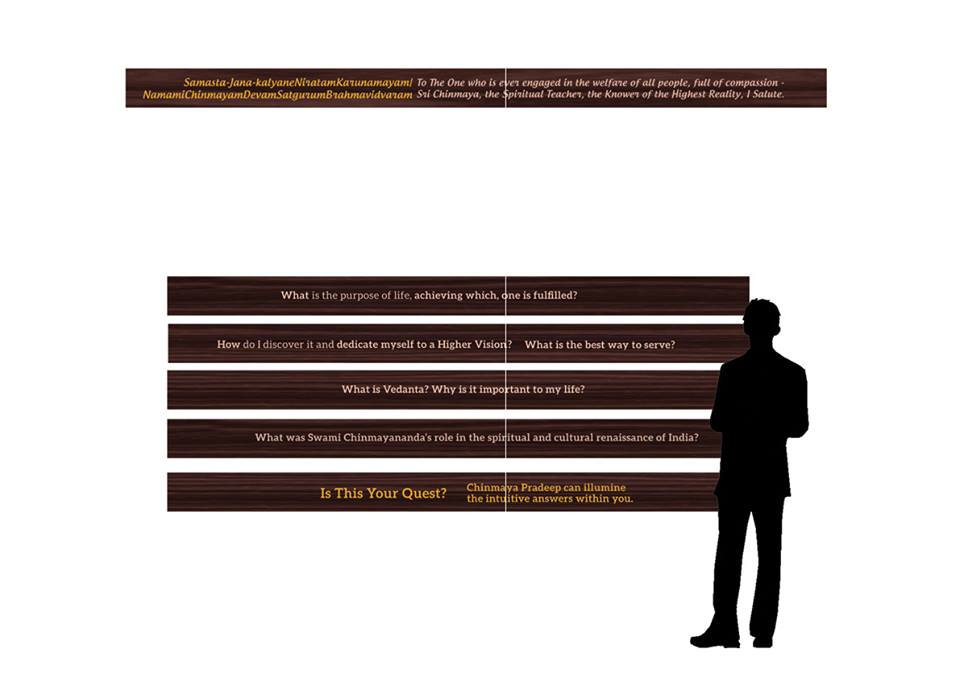
Chinmaya Pradeep is the story of
a skeptic’s transformation to a seeker & a spiritual master. Its the story of the decline and revival of Vedic Saraswati Culture.
It’s our story through Swami Chinmayananda’s life & Vision
Chinmaya Pradeep is a first of its kind permanent outdoor multi-medium and multi-media Vision Park in India
It is based on 11 verses of Kritagnataa – Gratitude, composed by Swami Tejomayananda. It is coming up around the Kutia of Swami Chinmayananda in Sandeepany Sadhanalaya Powai, Mumbai, spread over 20,000 sq.ft.
.jpg)
.jpg)
Based on Kritagnataa Verse 1, Chinmaya Pradeep covers the following 5 aspects of Swami Chinmayananda:
1. A Visionary & A Missionary (Samasta jana kalyane niratam)
2. A Compassionate Sannyasi (Karunamayam)
3. A Spiritual Teacher (Satgurum)
4. A Man of Fulfillment & (Brahmavidvaram)
5. A Multi-faceted personality (Namami Chinmayam Devam)
The entrance will have multi layered depictions with the Himalayas, Plants & trees, pictures of Swami Chinmayananda to depict the first four aspects and a glass river in the front to symbolise the Ganga. A hyper-realistic statue made of Silicon will depict the fifth aspect.
It will also have traingular patterns on the floor, depicting the journey from Duality to Non-Duality and a synthesis of the 3 yogas - Karma, Bhakti & Jnana in Poojya Gurudev. Its the journey that each of us have to accomplish.
These 5 aspects are the answers to the 5 questions mentioned in the earlier post.
.jpg)
.jpg)
Swami Chinmayananda was inspired by the Knowledge of Vedanta which transformed him. Sitting on the banks of the Ganga in a place in gangotri that was called - Faquiristan(where the sadhus met for discussions), he wondered –
“Can I do it?
Can I face the educated class of India and bring to their faithless hearts at least a ray of understanding of what our wondrous culture stands for? Sitting on the banks of the roaring Ganga, I shivered as I pondered the thought. None could argue against the Eternal Truth that man is in essence God. But could I explain it to others? Sitting, watching the Mother Ganga in her incessant hurry, I seemed to hear the words interlaced in her roar, ‘Son, don’t you see me; born here in the Himalayas, I rush down to the plains taking with me both life and nourishment to all in my path. Fulfillment of any possession is in sharing it with others.’ I felt encouraged, I felt reinforced. The urge became irresistible." - Swami Chinmayananda
Chinmaya Pradeep starts with this inspiration born in the hearts of Poojya Gurudev and he goes into a flash back about our culture and why it declined, how to revive it etc.
This is based on Verse 2 of Kritagnataa.
.jpg)

Chinmaya Pradeep will have a flowing river symbolizing the Ganga & Saraswati. It will flow from the statue of Swami Tapovanam to the statue of Swami Chinmayananda also symbolizing the flow of Knowledge from the Guru to the Shishya.
Work for the river has already begun and a rough shape has also been made.
Why did our glorious vedic culture decline? How did centuries of invasions affect our culture? What was the damage to our education system and our national psyche during the British rule? How rituals were/are being performed mechanically?
These aspects will be depicted through a multi-layered depiction combined with the new technology of a cell-phone guided audio app , which will give more details of the exhibits to the visitor.
Into such an atmosphere of slavery and cultural decline was born P.Balakrishna Menon on 8th May 1916 in a highly ritualistic family in Ernakulam, Kerala. He was a smart, naughty and a fun loving child. Chattambi Swamigal named and blessed him in his childhood.
Saraswati River work progress and the metal grid is the backdrop for the Saraswati Panel that will display the glorious Vedic Civilization that sprung around the banks of Saraswati.
Did you Know that Saraswati River was so mighty that in some places its width was 20km.
Which is the most ancient Indian Civilisation? Indus Valley Civilisation? That's what we have been taught. But it is not. Have a look at an excerpt from a
play called - Adrshya - A Quest for the Unseen by Chinmaya Yuva Kendra Mumbai performed in 2010 and find out which is the most ancient Indian Civilisation. Chinmaya Pradeep will introduce us to the real roots of our culture.
What are our cultural roots? Vedic culture is said to have flourished on the banks of the river Saraswati. With modern technology, the route of Saraswati River is mapped and is dated to 10,000BCE. What was the glorious culture of ours? Our ancestors scaled the peaks of knowledge in all fields. Aryans never invaded us. Our native intelligence was much ahead of its times globally. This multi-layered depiction in Chinmaya Pradeep will bring out the glory of Saraswati Culture which is alive and being practiced by all of us even today.

Balan grew up to be a smart young man who went to the Lucknow university to study. He had become an agnostic by then. He fought for the freedom of India as a revolutionary and was jailed. A jail will be created here using perspective. Balan was on the verge of death and was thrown out. A kind lady saved him and he recovered to become a journalist. He got into the elite class of Delhi and found their life very hollow. He decided to go to Rishikesh & expose the ‘bluff of the sadhus’ as he had read some articles of Swami Sivananda while he was in jail.

Upon reaching Rishikesh, Balan met Swami Sivananda and asked lots of questions. Chinmaya Pradeep will have the questions that a skeptic would ask and the replies will be in the audio of Swami Sivananda of Divine Life Society. Balan met Swami Sivananda and observed his vision of Vedanta along with his spiritual life of sadhana, discipline and service to humanity.
Meanwhile, his friend Shroff passed away and it was a big blow to Balan. Convinced about the Eternal Nature of Truth and ephemeral nature of life, Balan decided to take up Sannyas. Swami Sivananda told him to go on a chardham yatra to see if this was a deep quest or a passing phase. Balan went on a chardham yatra and met many mahatmas en-route. Anecdotes of the mahatmas will be depicted here visually and in audio. At the end of it Balan was convinced of his decision.
On 25th February 1949 on Shivaratri Day, Swami Sivananda initiated Balan into Sannyas and named him Swami Chinmayananda.
This is the story of the skeptic becoming a seeker and a sannyasi.
Swami Sivananda guided Swami Chinmayananda to study Vedanta systematically and get answers to his deeper questions. The steps of Vedanta from Karma Yoga to Nididhyasan & Samadhi along with anecdotes of Swami Tapovanam & Swami Chinmayananda will be depicted next. Kutias of Swami Chinmayananda & Swami Tapovanam will be symbolically created here.
Swami Chinmayananda’s kutia when he was studying, was 9ft x 5ft x 4ft. It will be recreated in Chinmaya Pradeep.
Swami Chinmayananda studied Panchadashi & 4 upanishads with Swami Tapovanam. The Upanishads contain Mahavakyas which reveal the oneness of the Individual with the Supreme. The Mahavakyas are:
Prajnanam Brahma - Consciousness is Brahman.
Tat Tvam Asi - That Thou Art.
Ayam Atma Brahma - This Atman is Brahman
Aham Brahmasmi - I am Brahman.
Chinmaya Pradeep will have 4 temples for 4 Mahavakyas, depicting them through interactive installations and meditative exercises. Each temple has one Mahavakya at the altar.
All life forms connected through light or Consciousness depicts Prajnanam Brahma, A mirror maze explains Tat Tvam Asi, A sterogram of OM can be meditated upon for Ayam Atma Brahma and an experience of no boundaries will indicate for Aham Brahmasmi.
After two years of Study under Swami Tapovanam, Inspired by the Ganga, Swami Chinmayananda got permission from his teacher and came down to the plains in December 1951 to share with the masses, the knowledge of the essence and glory of Hinduism – Advaita Vedanta. His aim was to revive Hindu Culture through individual transformation. Hinduism is like a tree which is constantly growing and adapting itself to time with its flexibility.
Chinmaya Pradeep will have an installation, based on Verse 3, which will depict salient features of Hinduism, the knowledge-chart & the significance of some of our daily practices in Hindu culture. This area will inspire us to be a proud, practicing & secular Hindu.
In 1953, Chinmaya Mission was formed and Swami Chinmayananda chose the lamp as the emblem of Chinmaya Mission and called it Chinmaya Pradeep. This lamp will be depicted as a fountain with flames within and water flowing from top with a swan perched on it with a drop of milk in its beak symbolising discrimination between the Real and the Unreal. It will be near Swami Tapovanam's pratima in the Ganga/Saraswati Installation.
The motto, statement, vision and growth of Chinmaya Mission will also be depicted here. Verse 4 of Kritagnataa covers this
Swami Chinmayananda loved Hindu Culture and way of life. A few important Hindu Concepts that he re-interpreted rationally and made applicable in our daily life, will be depicted behind the cultural decline panel through multiple layers. The depiction will be a sunrise scene, symbolising the revival of Hindu Culture.
No one told him to do anything. Swami Chinmayananda took initiatives and did what was the need of the hour. He did it selflessly and out of detachment. A beautiful lotus pond with anecdotes of Detachment of Swami Chinmayananda will come up next along with Geeta Chapter 5 Verse 9 that speaks about the Lotus leaf not being affected by water.
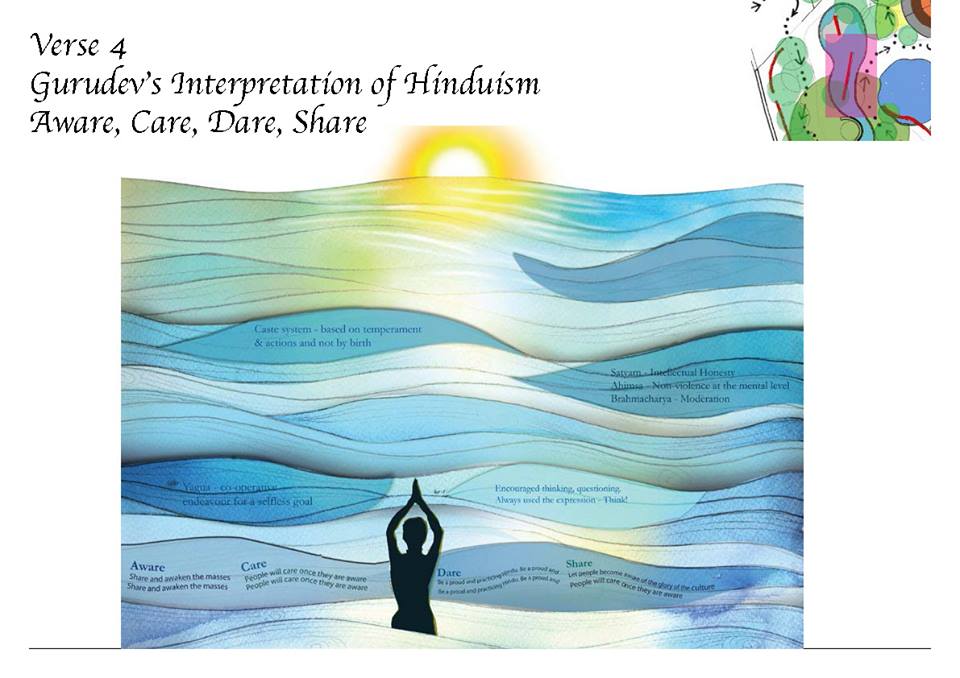
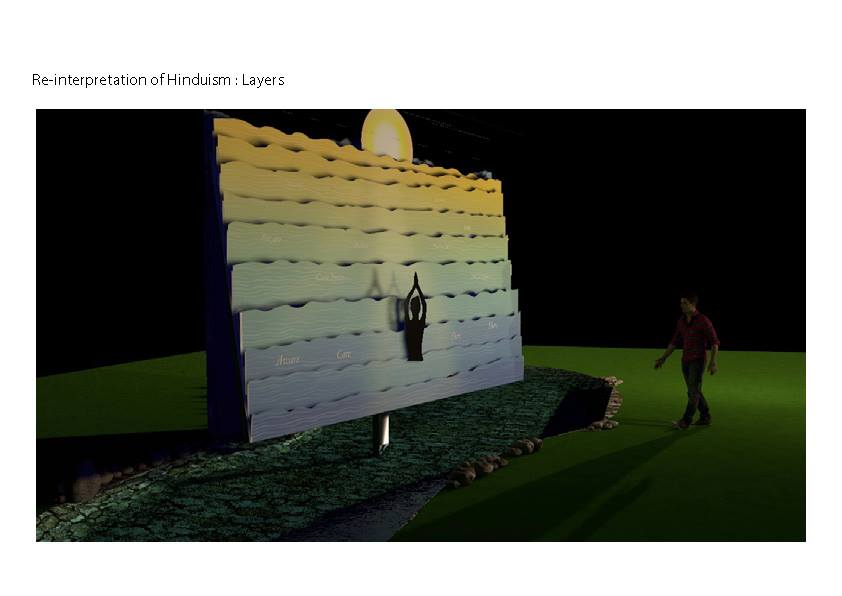
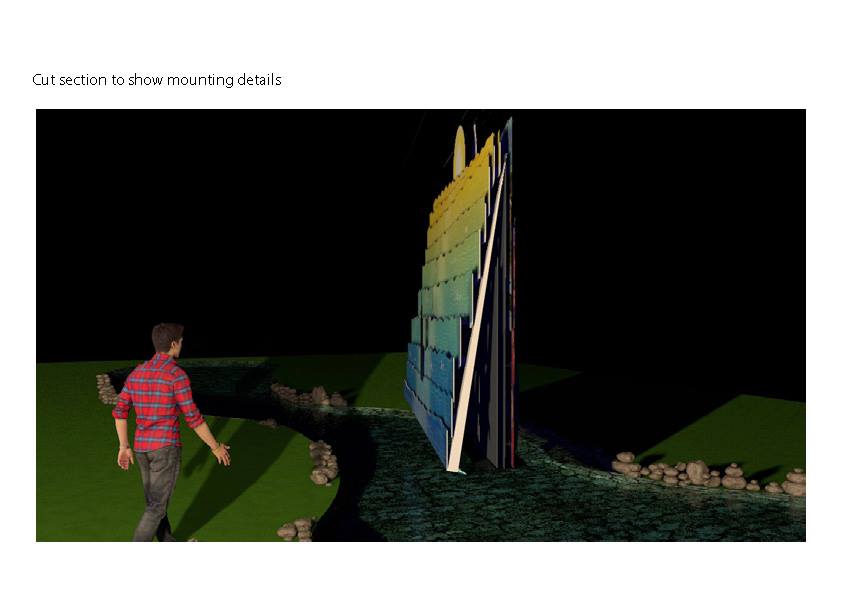
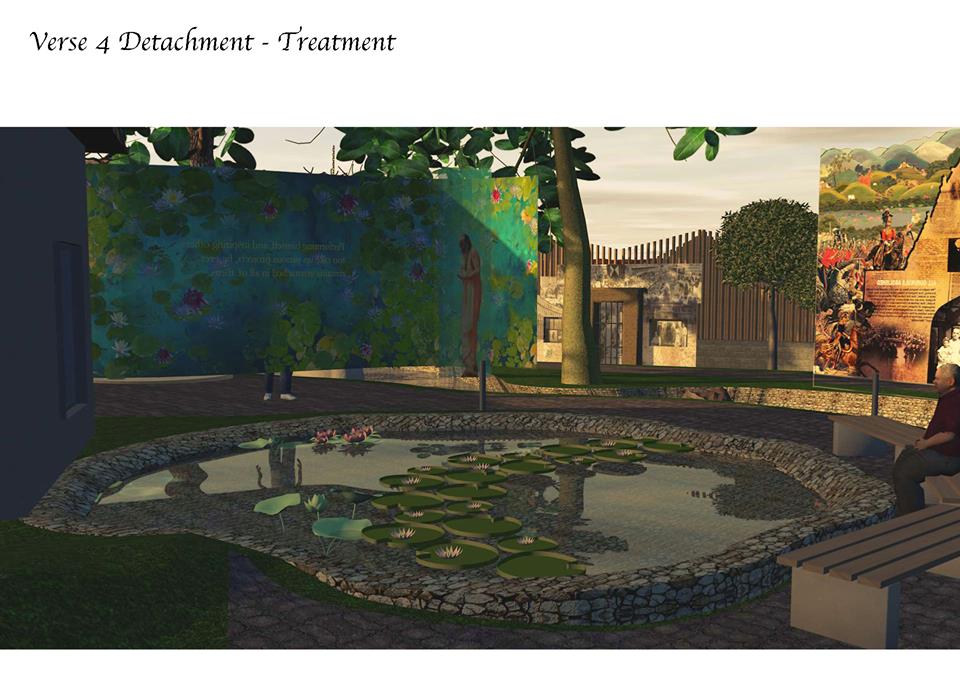
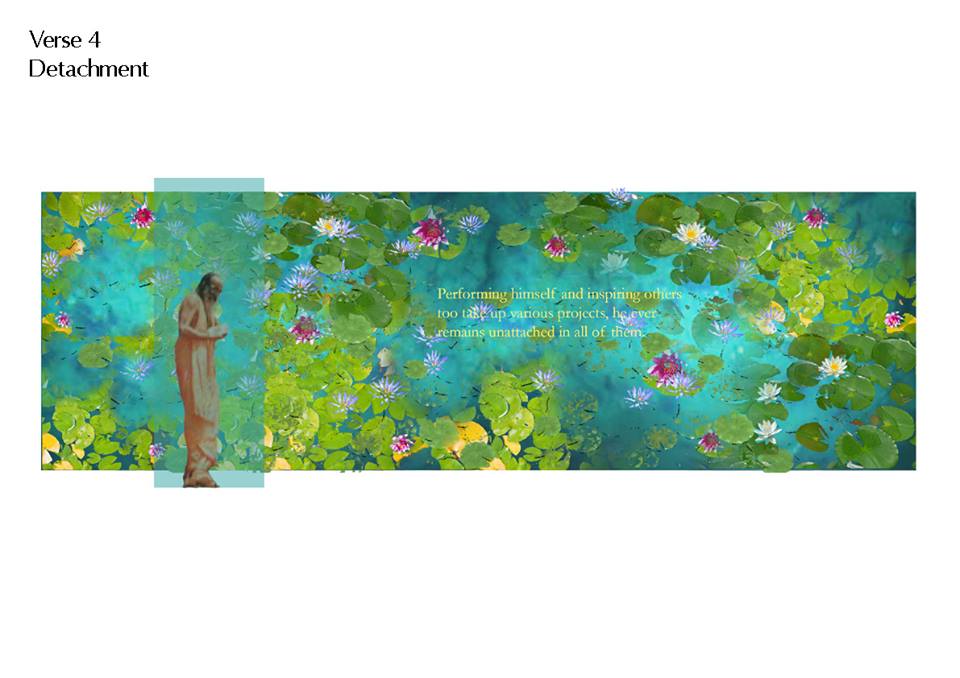
Swami Chinmayananda used a BMI Chart to explain the essence of Vedanta. This chart is synonymous with him and he used it for over 40 years. The BMI Chart explains the human personality and its working along with ways to transcend it, and how to know one’s Real Self.
In Chinmaya Pradeep, The BMI Chart will be depicted in 3D and one can climb on it, sit, reflect, think with the help of the audio guide and the Chinmaya Pradeep app. When one finishes understanding it, one can walk down and underneath it is a place to meditate on OM and also to watch videos of Swami Chinmayananda explaining the BMI Chart.
This walk through video is for the Jnana Yagna depiction on the left, after one gets down from the BMI chart. One can go inside the Meditation Room below BMI chart and when one comes out of it, one will see the section on Sandeepany Sadhanalaya, made into 3 parts using the Flames, Swan and Lotus, derived from the logo of Sandeepany.
Jnana Yagnas or Spiritual Discourses were the first in his 5 point plan of Cultural Revival. Through these, Swami Chinmayananda brought Vedanta to the masses, irrespective of cast, creed, community, gender etc. A mass awakening was brought about in the intellectual class as well as the common man. Even today Chinmaya Mission conducts Jnana Yagnas where ignorance and negative tendencies are sacrificed in the fire of Knowledge. This is based on Verse 5 of Kritagnataa
Swami Chinmayananda wanted many more dynamic & dedicated people who would share the knowledge of Vedanta with the masses and bring about a cultural revival. His 2nd point in Cultural revival was that He established Sandeepany Sadhanalayas across India and abroad where Vedanta is taught systematically in a fully residential course to the students, FREE of cost. At the end of their training they may choose to become full time workers & pracharaks. Sandeepany is the heart of Chinmaya Mission. Acharyas who keep the vision glowing are moulded here. Vision of Sandeepany, syllabus, schedule, history, growth in Chinmaya Mission order of initiation etc. are covered beautifully through the installation inspired by the logo of Sandeepany – the flame, the swan and the lotus. (All images are only for reference and not actual artwork)
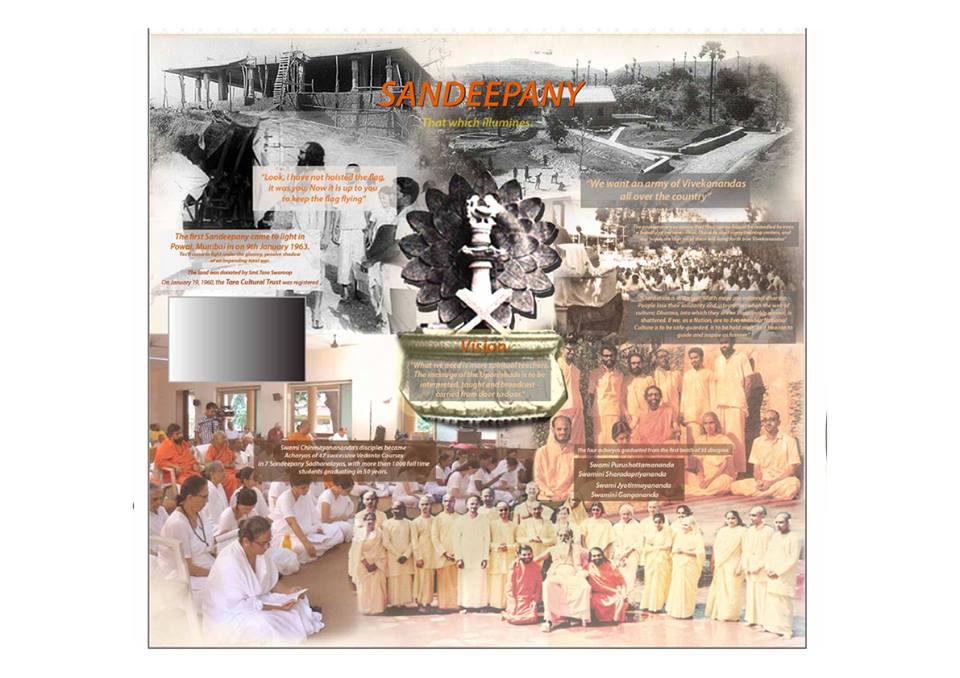
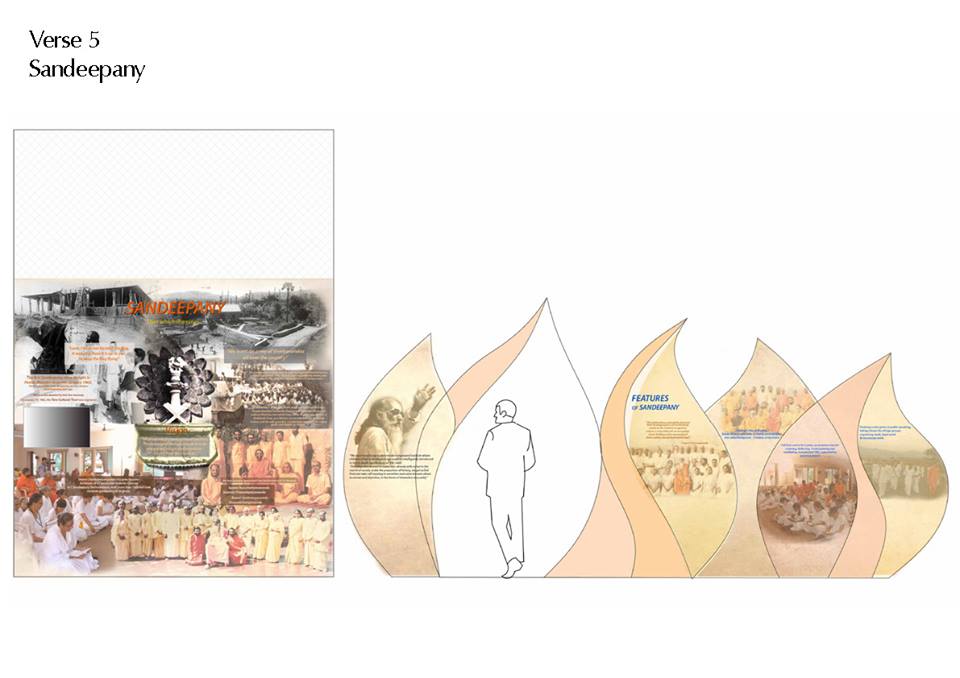
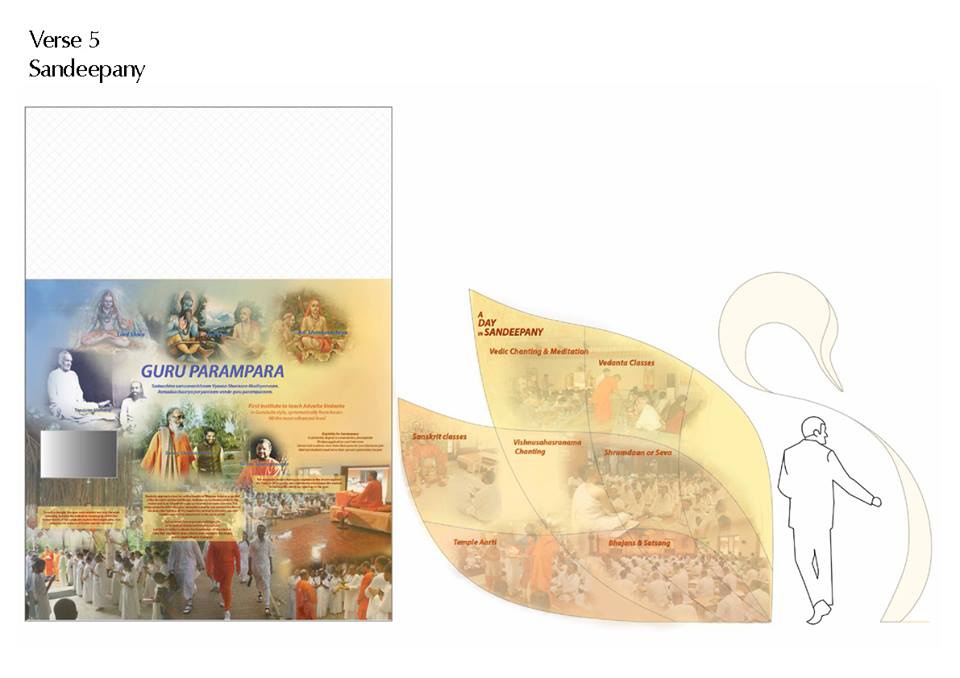
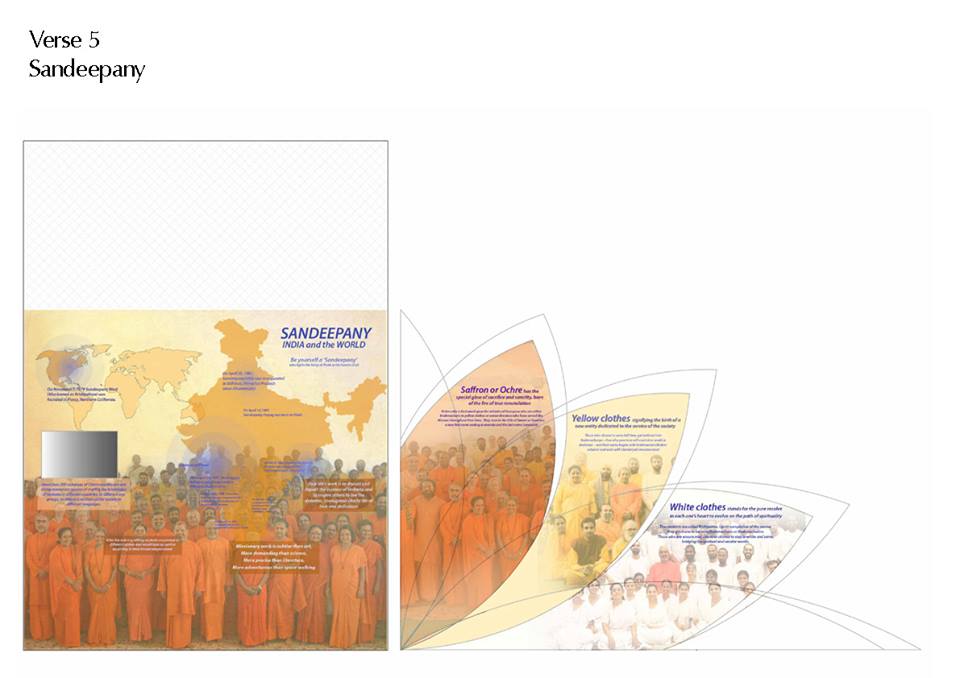
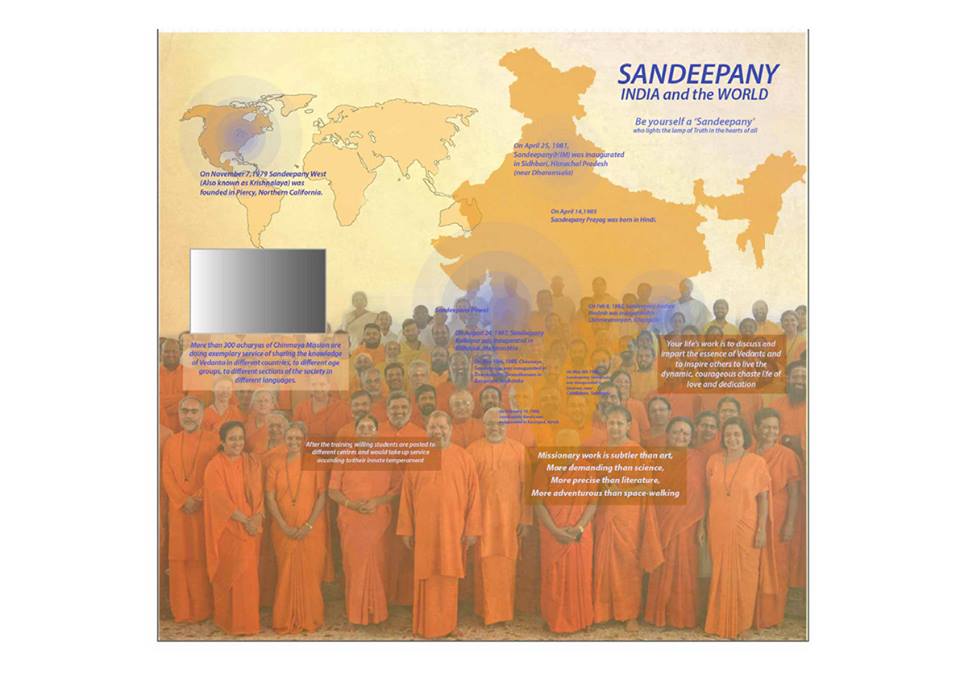 The third point of cultural revival was to write books and commentaries. Swami Chinmayananda wrote many books and commentaries on many vedantic texts including the Bhagavad Geeta & Upanishads. They continue to inspire millions even today and bring about the true understanding of Hindu Culture in many hearts. He devised a scheme of study from basic to advanced levels. Using the analogy of a route-map, books will be displayed here in an interesting way in 5 categories:
The third point of cultural revival was to write books and commentaries. Swami Chinmayananda wrote many books and commentaries on many vedantic texts including the Bhagavad Geeta & Upanishads. They continue to inspire millions even today and bring about the true understanding of Hindu Culture in many hearts. He devised a scheme of study from basic to advanced levels. Using the analogy of a route-map, books will be displayed here in an interesting way in 5 categories:
1. Introductory books that he wrote (Grantha-Prakashanam)
2. Commentaries on texts (Vyakhya)
3. Puranas (Bala Bhagavatam & such books for children)
4. Smritis (Bhagavad Geeta & other books)
5. Shrutis (Upanishad Commentaries)
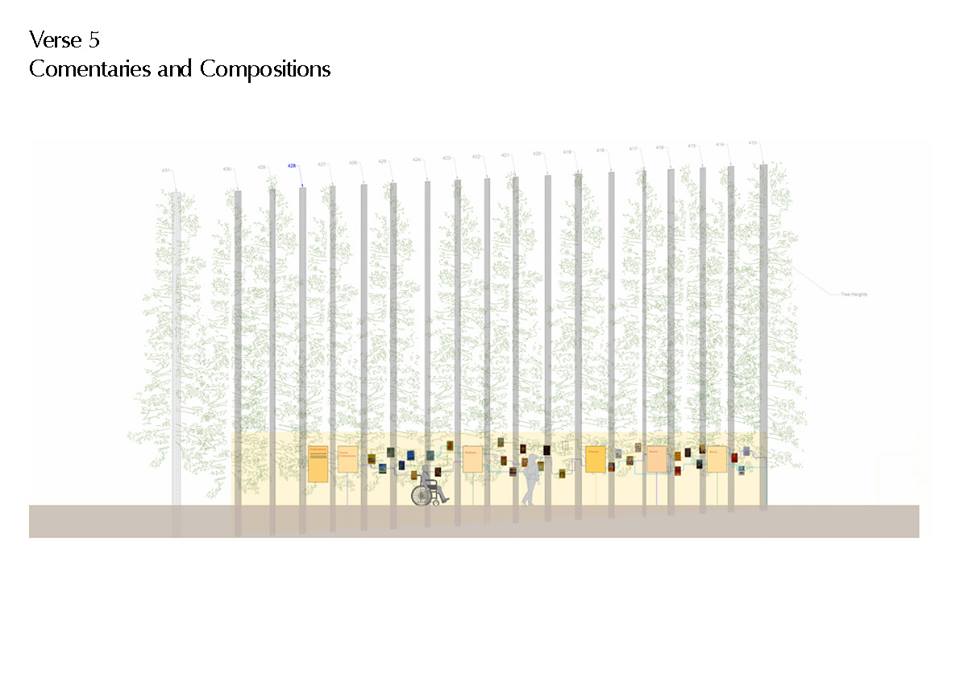

To sustain the spark ignited through jnana yagnas, books etc.
Swami Chinmayananda started weekly sessions for all age groups. These grassroot activities formed his fourth point for cultural revival. Balavihar, Chinmaya Yuva Kendra, Chinmaya Setukari, Chinmaya Study & Devi Groups, Chinmaya Vanaprastha Sansthan are the grassroot activities of Chinmaya Mission. These activities will be depicted by panels and wrought iron sculptures showing a boy and a girl’s complete journey of life.
In his fifth plan for cultural revival, Swami Chinmayananda also established many social service projects – rural development, hospitals, hari-har schools etc. along with national projects and cultural projects.
Loka Seva will cover CORD, Hospital and other social service initiatives of Chinmaya Mission. Dharma Nishtha will cover CIF, Temples and other such initiatives. Desh-Bhakti will cover National initiatives like Awakening Indians to India etc.
This is based on verse 6 of Kritagnataa.
So far we have covered Swami Chinmayananda’s life as a Missionary & Visionary, as a sannyasi, as a teacher. Now we go to the last two aspects – Swamiji as a multi-faceted personality & as a man of Fulfillment
We will be creating an earth-shelter wherein there will be a 270degree panoramic view of the images of Swami Chinmayananda. They will be arranged to depict a day in the life of Swami Chinmayananda from morning till evening and will show his missionary life from 1950s till 1993. It will cover his letter writing, his wit, his humor, his style, his oratory etc. This is based on Verse 7 of Kritagnataa
Verse 8 says that the qualities of a knower of Brahman, as described in the scriptures are lived by Swami Chinmayananda. Swamiji did not project himself as a God-Man. He loved everyone and served the society while reveling in the Self within.
The Sthitaprajna portion of the geeta or the description of the man of fulfillment was extremely dear to Swami Chinmayananda. It indicates to us the goal of life – Fulfillment or Permanent Happiness, the means to discover it and how to know someone who has attained it? This will be depicted through a board walk through 4 gates. Across each gate one question of Sthitaprajna will be answered.
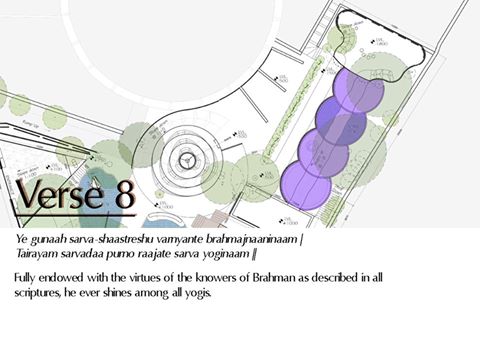
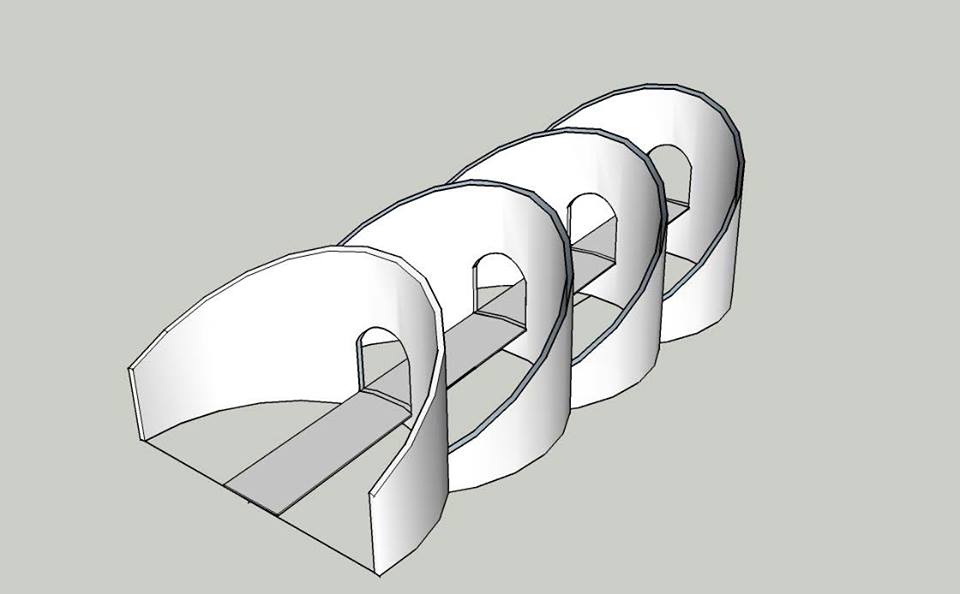
Question 1: What does a man of fulfillment experience in Samadhi when one transcends the Body Mind & Intellect?
The Analogy of a flame without a flicker is used here to show the Yogi’s mind is free from desires and abides in the Self within.
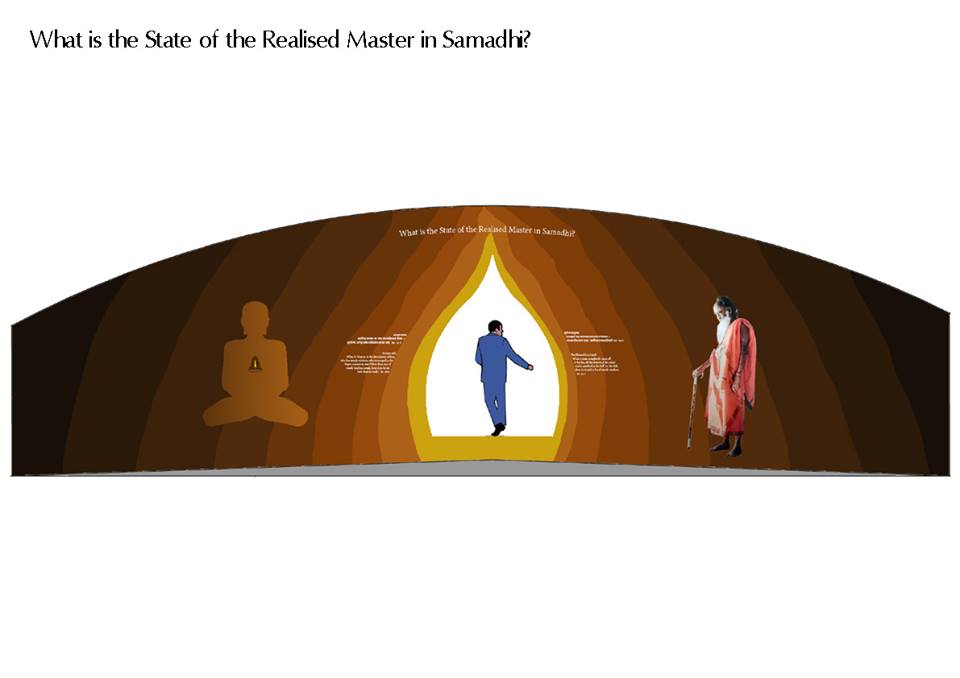
Question 2: How does a Man of Realisation interact with the other people?
The Analogy of detachment through a lotus is given here. One walks through the lotus petals. There will also be a lotus pond below the board walk.
Question 3: How does a Man of Realisation relate with the sense objects? Does he/she not get tempted?
The analogy of tortoise, its alertness, self-control is used here. One walks through the head of the tortoise. The ladder of fall is also depicted on the ground below.


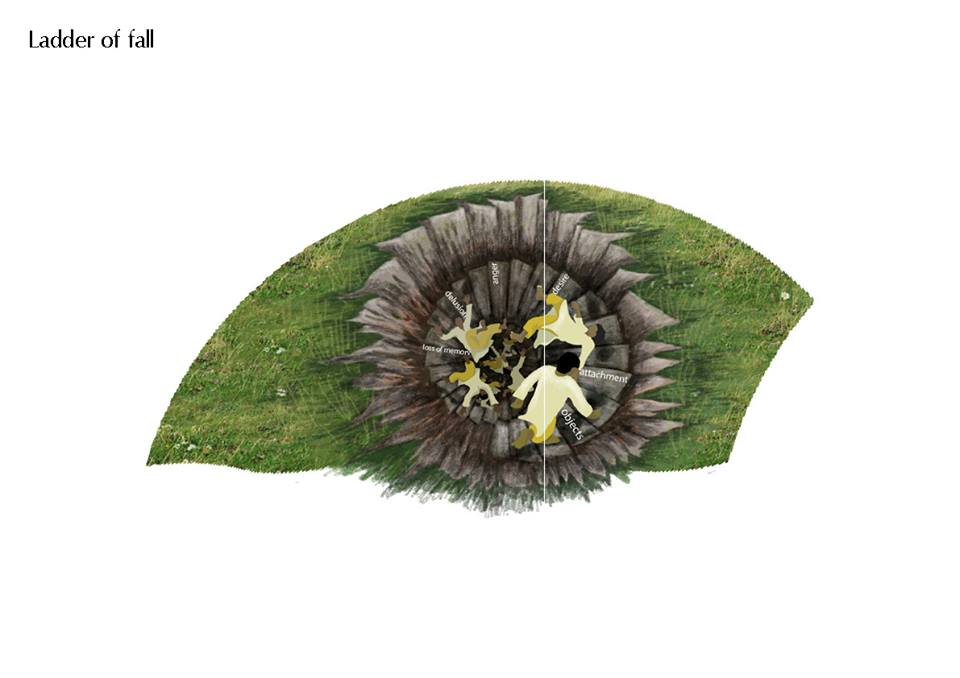 Question 4: How does the Man of Realisation deal with various situations? The ocean is never disturbed inspite of rivers emptying themselves into it or gallons of water getting evaporated.
Question 4: How does the Man of Realisation deal with various situations? The ocean is never disturbed inspite of rivers emptying themselves into it or gallons of water getting evaporated.
In all the 4 answers, one will see the relevant verses of the Geeta depicted with meaning, anecdotes from Swamiji Chinmayananda’s life so that one gets inspired to discover and achieve this purpose and goal of life which is Supreme Happiness & Fulfillment through abidance in the Self.
Verse 9 of Kritagnataa says - In Swami Chinmayananda we find a beautiful combination of Abidance in the Formless Self and devotion to the Lord with a form. This will be depicted through a beautiful image of Lord Shiva which slowly disintegrates step by step and ultimately dissolves in Blue light representing Chidananda Rupah Shivoham Shivoham. One can hear the melodious rendering of Nirvana Shatkam here.
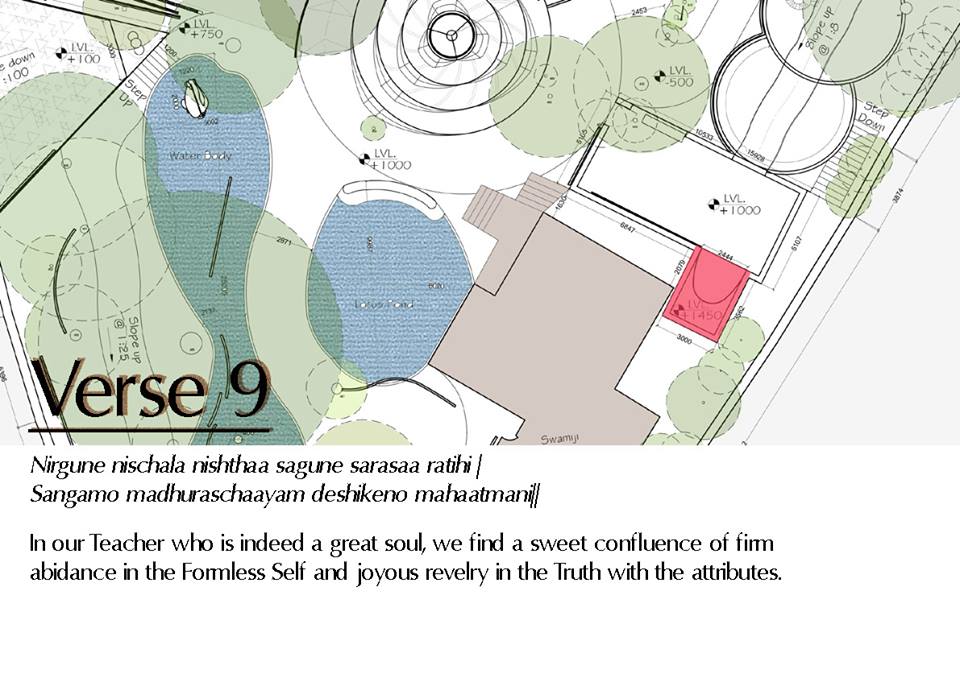
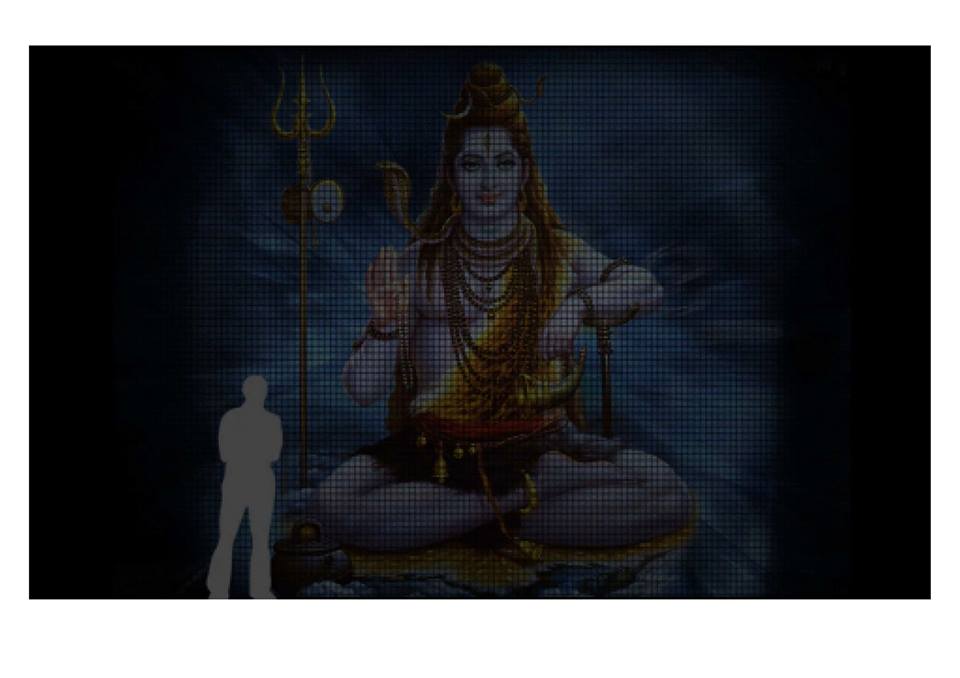 We are grateful to the Lord that we came across a great Master like Swami Chinmayananda who fulfilled his life and taught us how to achieve fulfillment. It is by His Grace and the knowledge that he gave us that we are able to quiten the mind. Verse 10 describes this gratitude.
We are grateful to the Lord that we came across a great Master like Swami Chinmayananda who fulfilled his life and taught us how to achieve fulfillment. It is by His Grace and the knowledge that he gave us that we are able to quiten the mind. Verse 10 describes this gratitude.
The concept of Jivan Mukti & Videha mukti along with Sidhabari Samadhi sthal will be depicted through pictures & a beautiful display of birds representing freedom
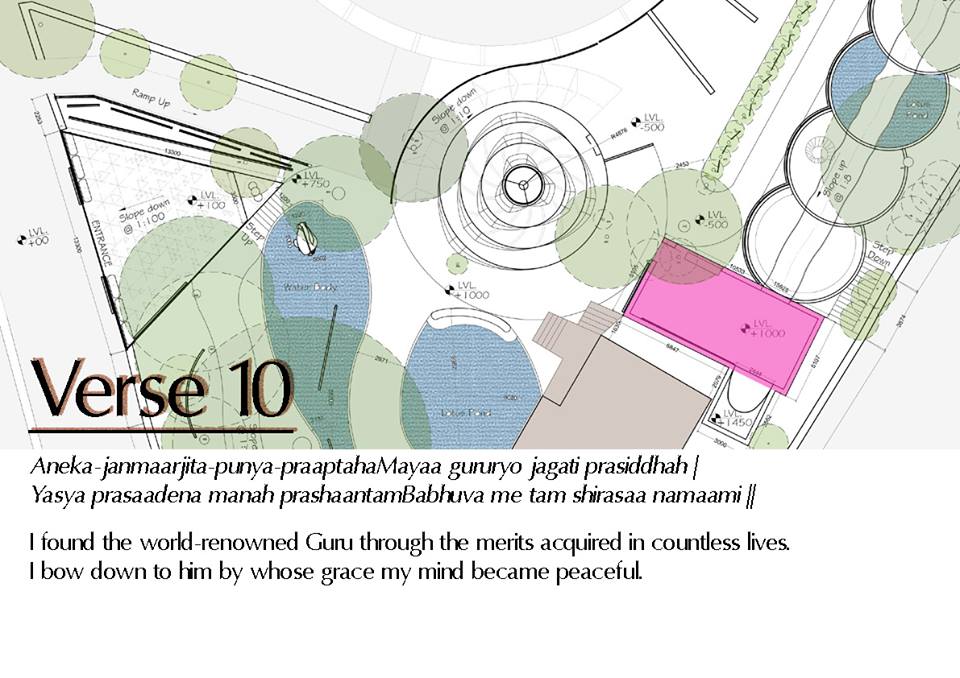
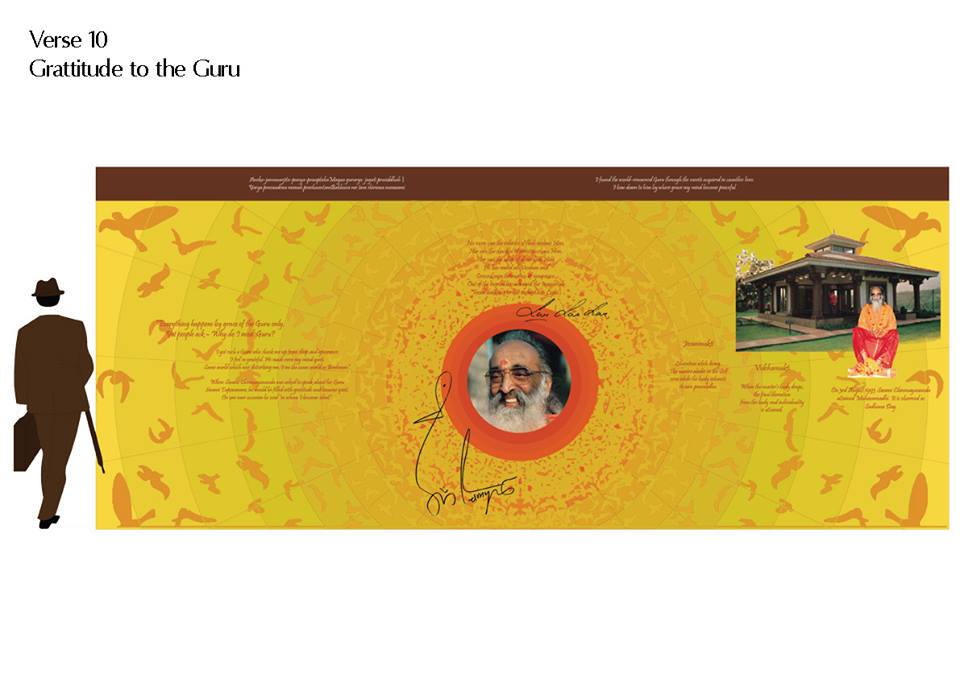
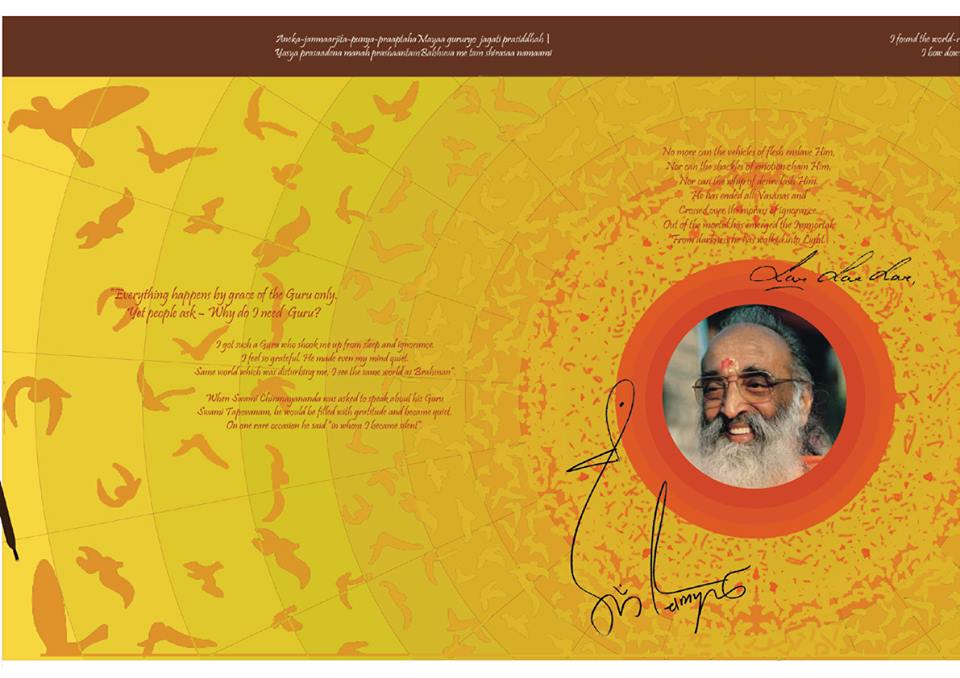
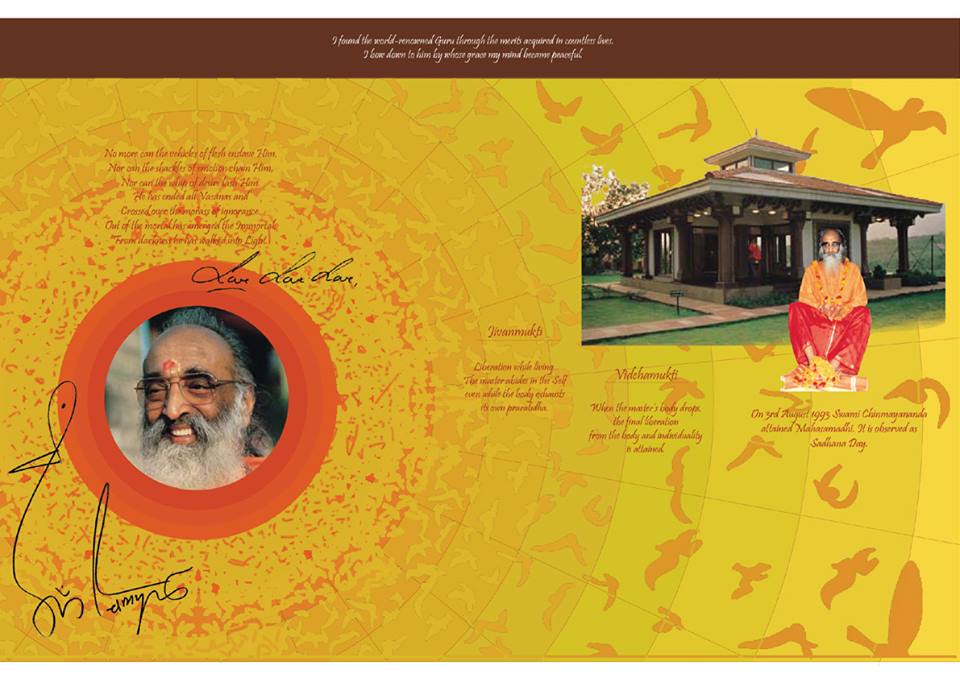 May we have more and more devotion to His Lotus Feet.
May we have more and more devotion to His Lotus Feet.
The last verse is to explain the significance of Padukas and why do we worship them and a prayer to the Lord to bless us with more and more devotion for the Lotus feet of the Satguru. After this, the visitor will enter the Kutia of Swami Chinmayananda and spend time in silence or chanting, to express one’s appreciation & gratitude
Chinmaya Pradeep
A mirror to our True Self
An understanding of the depth of our culture
A vision of Vedanta & Bhagavad Geeta
An inspiration to serve the society
An insight into the Goal OF Life & Means to achieve it.
Join us in offering a befitting tribute
to Swami Chinmayananda, to Hindu Culture & Vedanta
to every individual who wants to transform deeply.
UNTO HIM OUR BEST.
To contribute towards Chinmaya Pradeep, contact
Swami Swatmananda – [email protected] / 9323043204
Shri Mukul Patel – [email protected] / 9820060521
Smt.Nikki Singh – [email protected] / 9820070411
for online donation
Online Donation

.jpg)
.jpg)
.jpg)
.jpg)
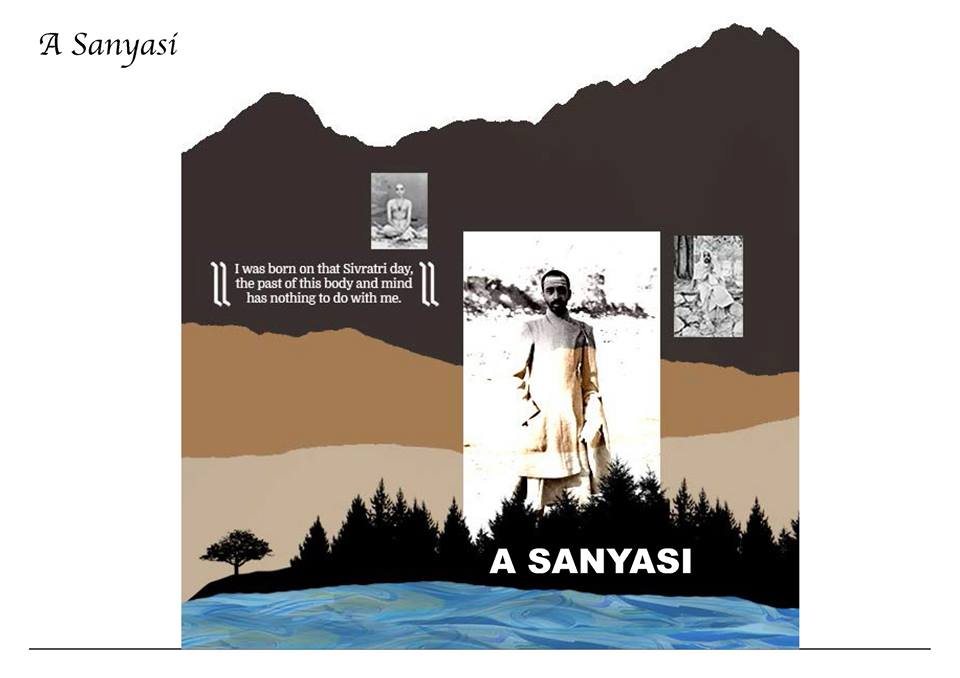
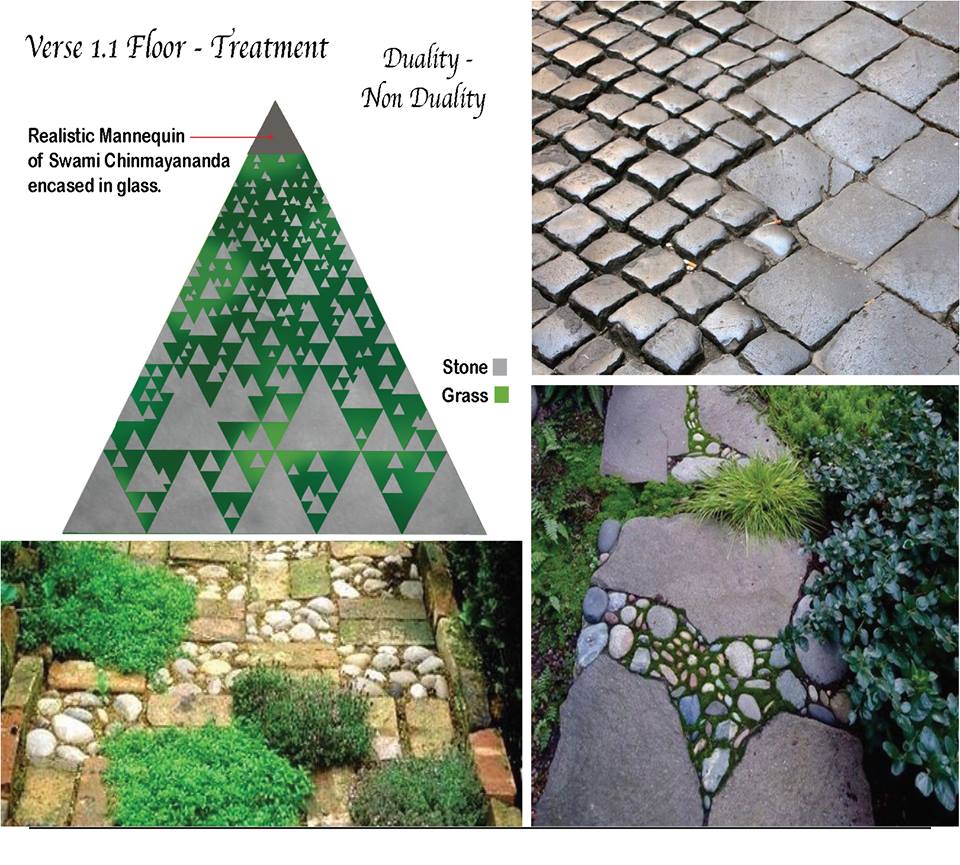
.jpg)


.jpg)
.jpg)


























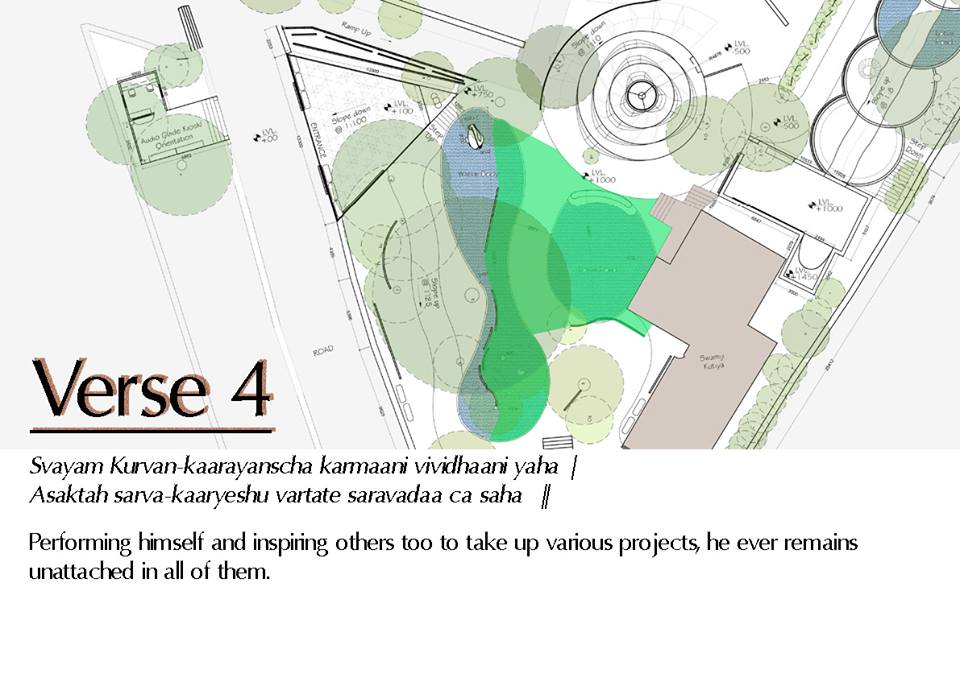
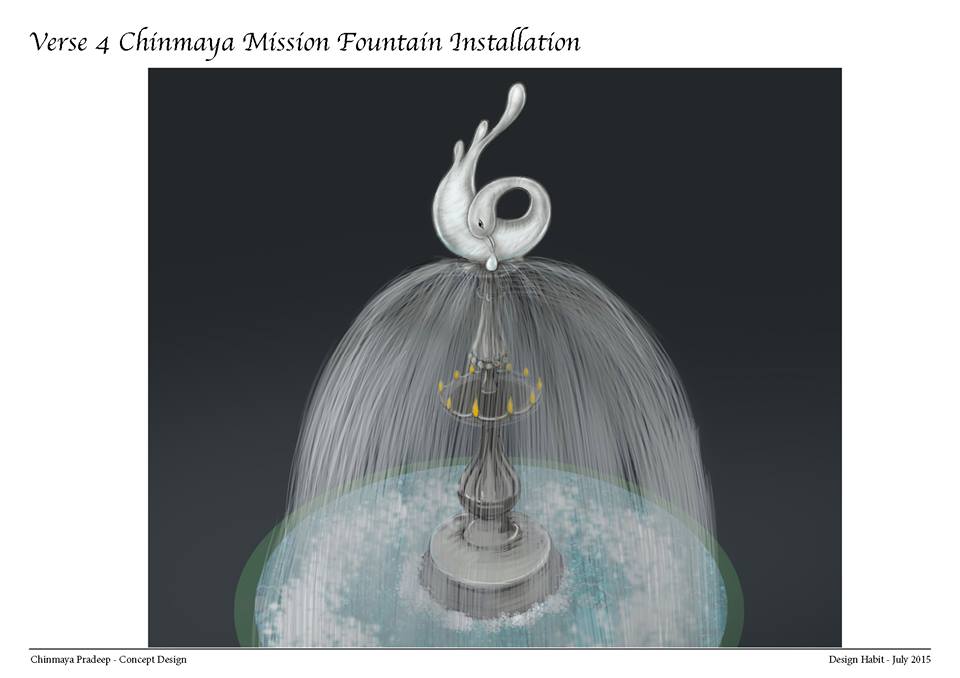
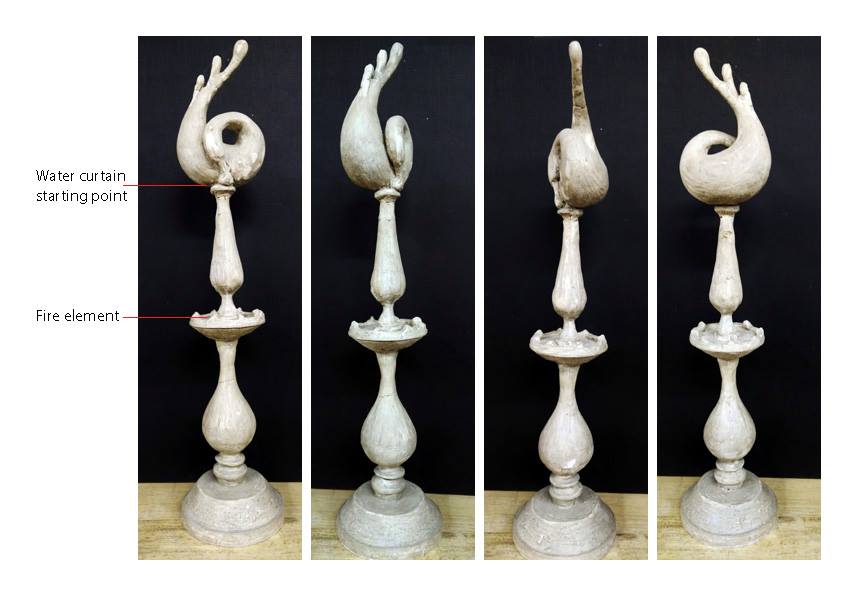
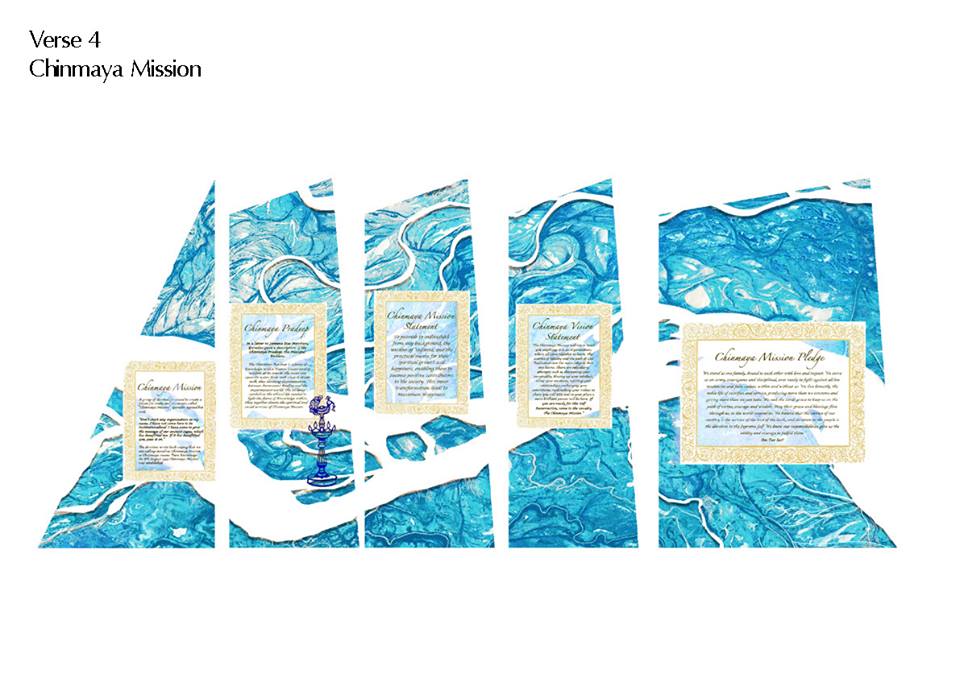






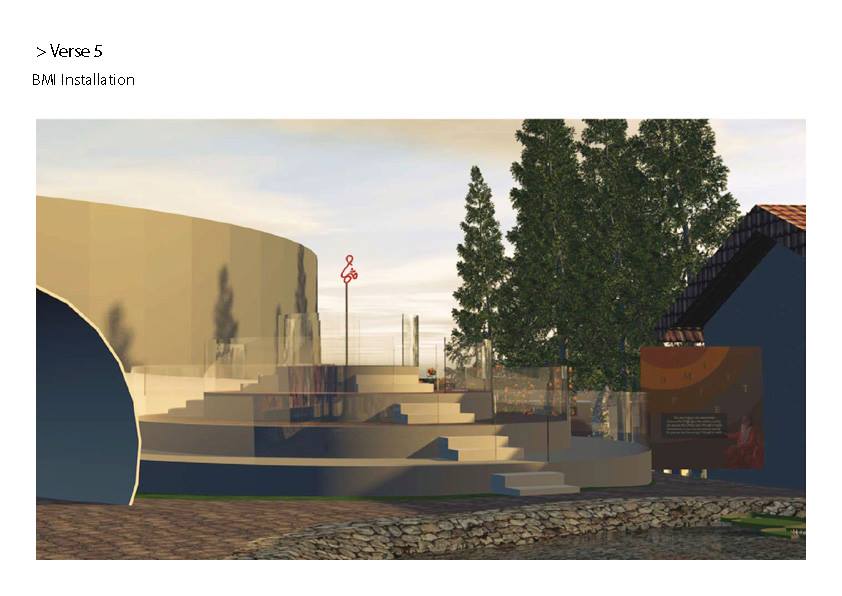
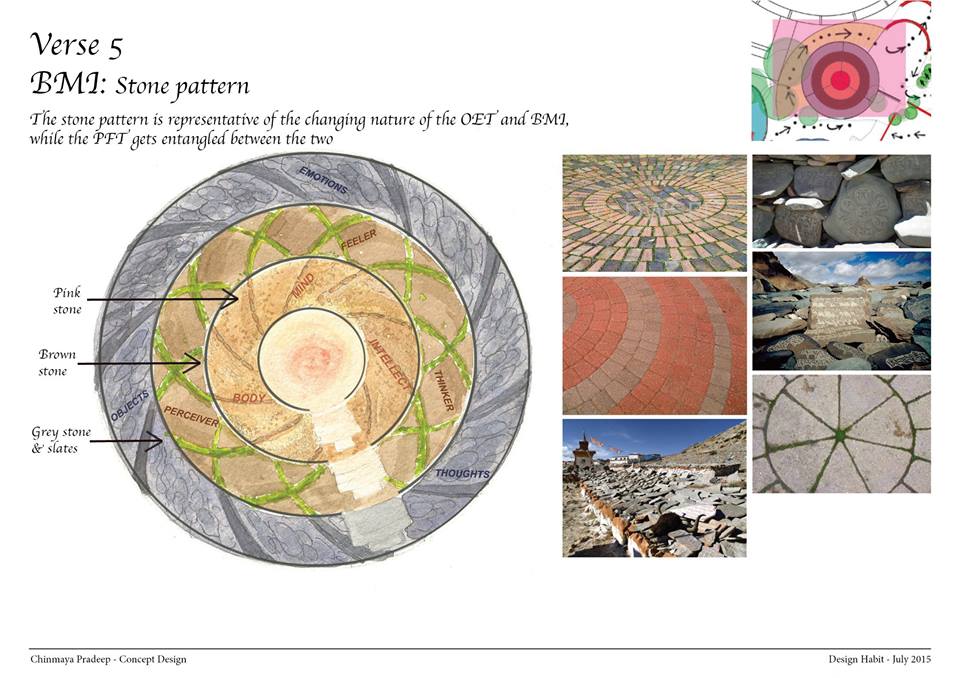
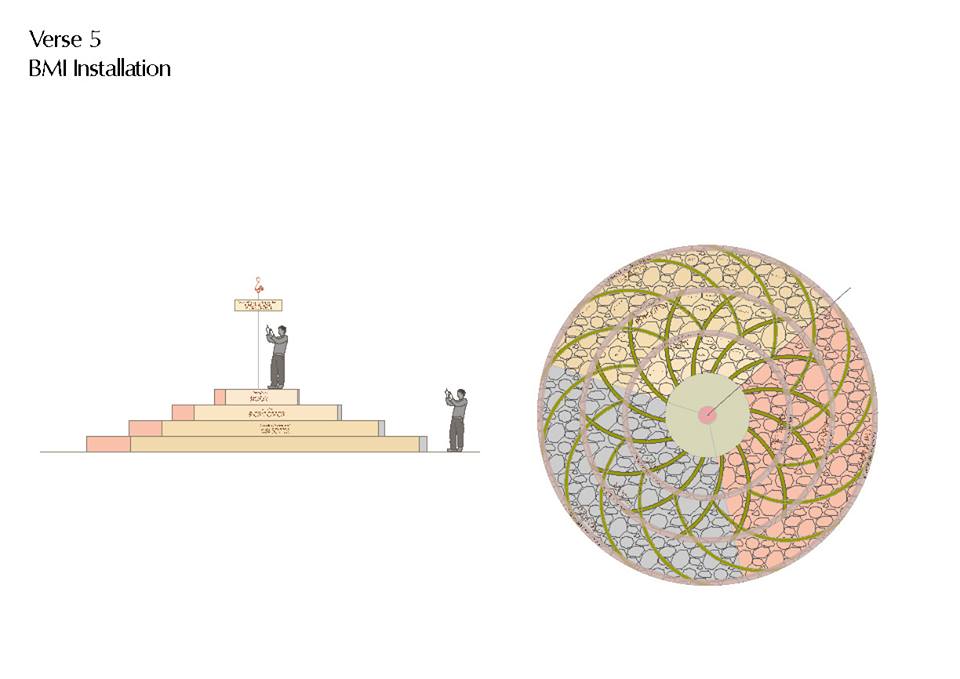
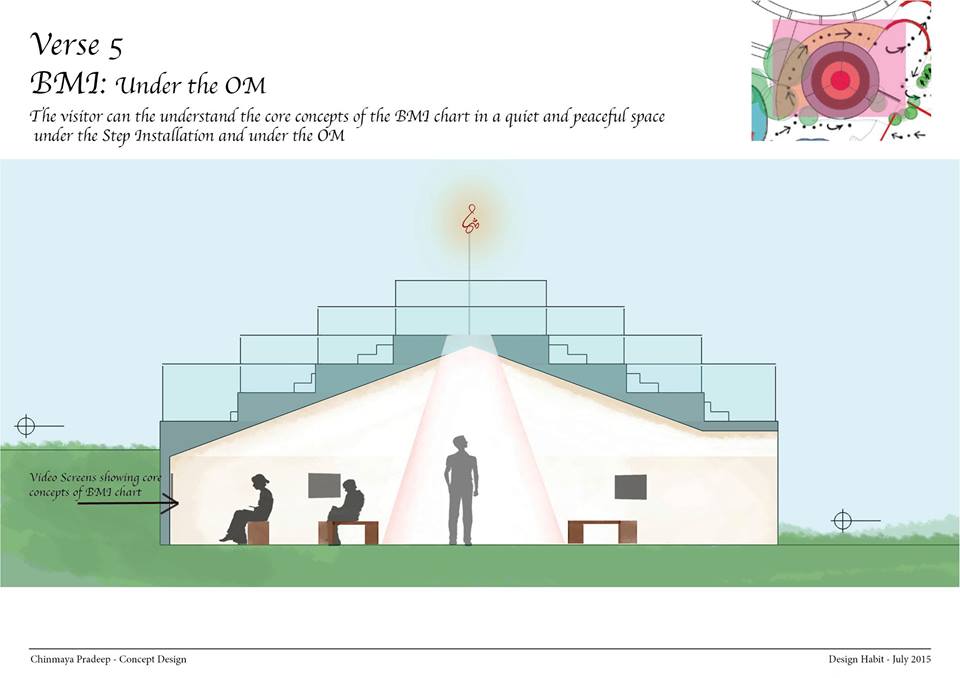
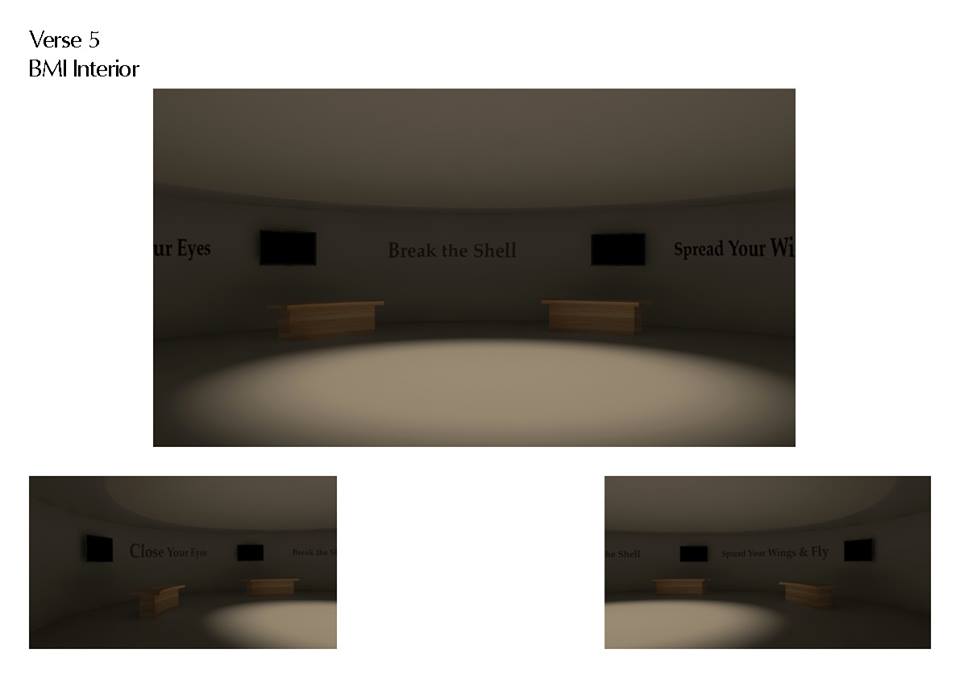
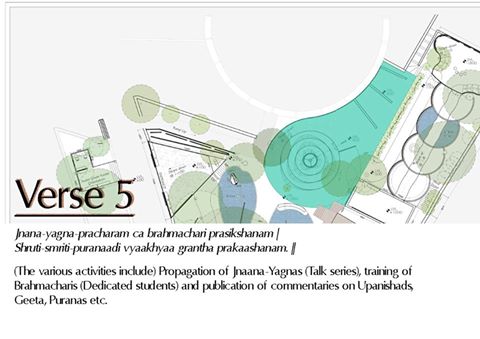
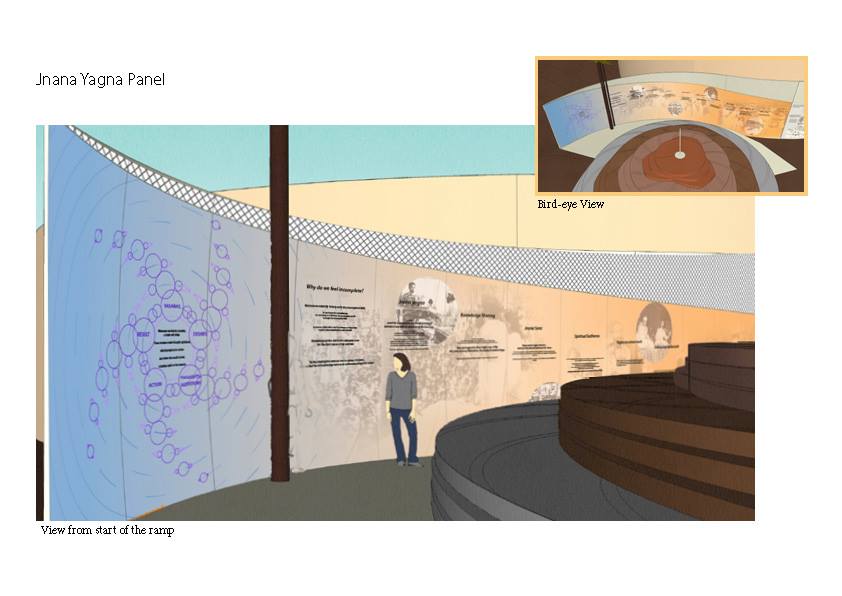
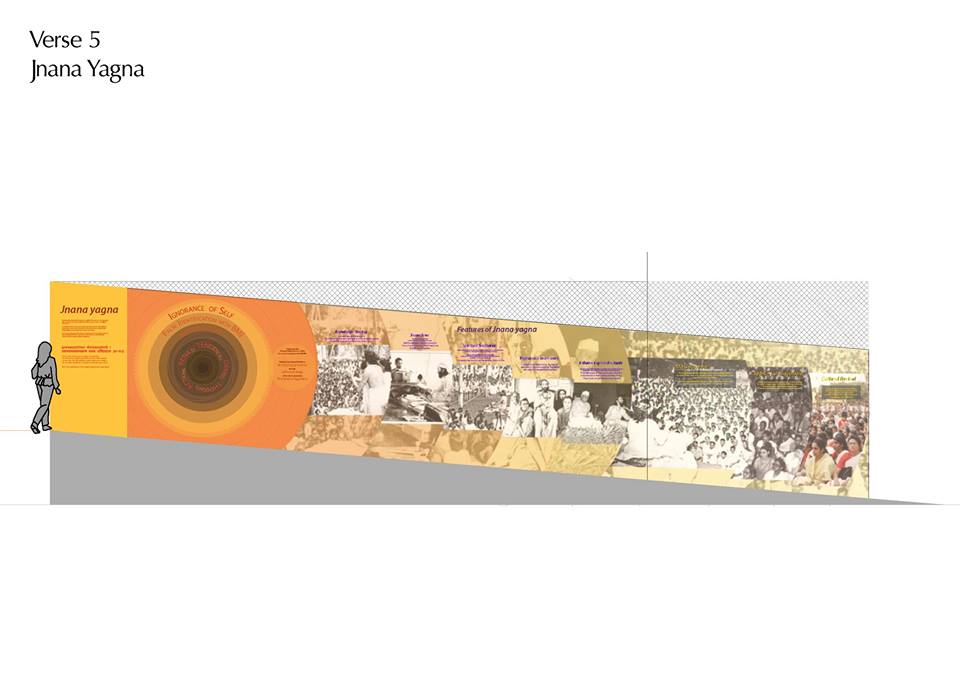




 The third point of cultural revival was to write books and commentaries. Swami Chinmayananda wrote many books and commentaries on many vedantic texts including the Bhagavad Geeta & Upanishads. They continue to inspire millions even today and bring about the true understanding of Hindu Culture in many hearts. He devised a scheme of study from basic to advanced levels. Using the analogy of a route-map, books will be displayed here in an interesting way in 5 categories:
The third point of cultural revival was to write books and commentaries. Swami Chinmayananda wrote many books and commentaries on many vedantic texts including the Bhagavad Geeta & Upanishads. They continue to inspire millions even today and bring about the true understanding of Hindu Culture in many hearts. He devised a scheme of study from basic to advanced levels. Using the analogy of a route-map, books will be displayed here in an interesting way in 5 categories:


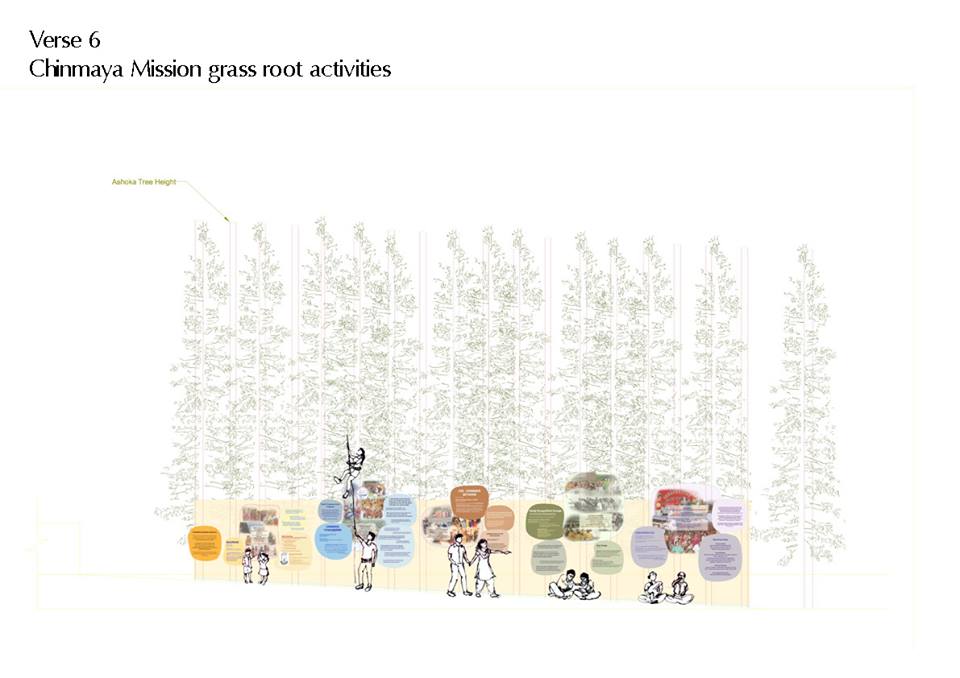
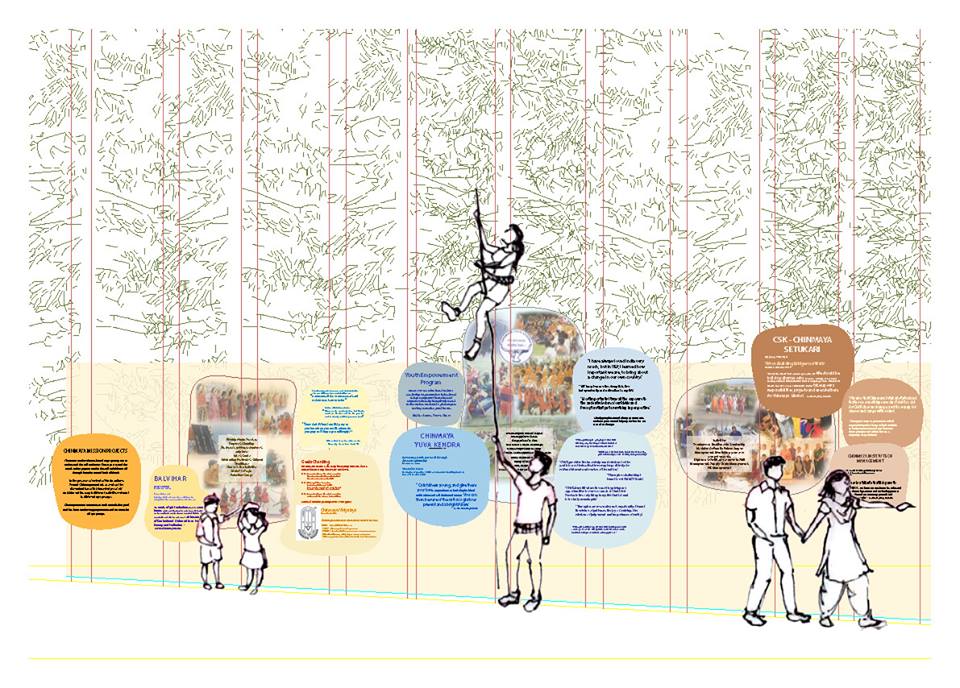
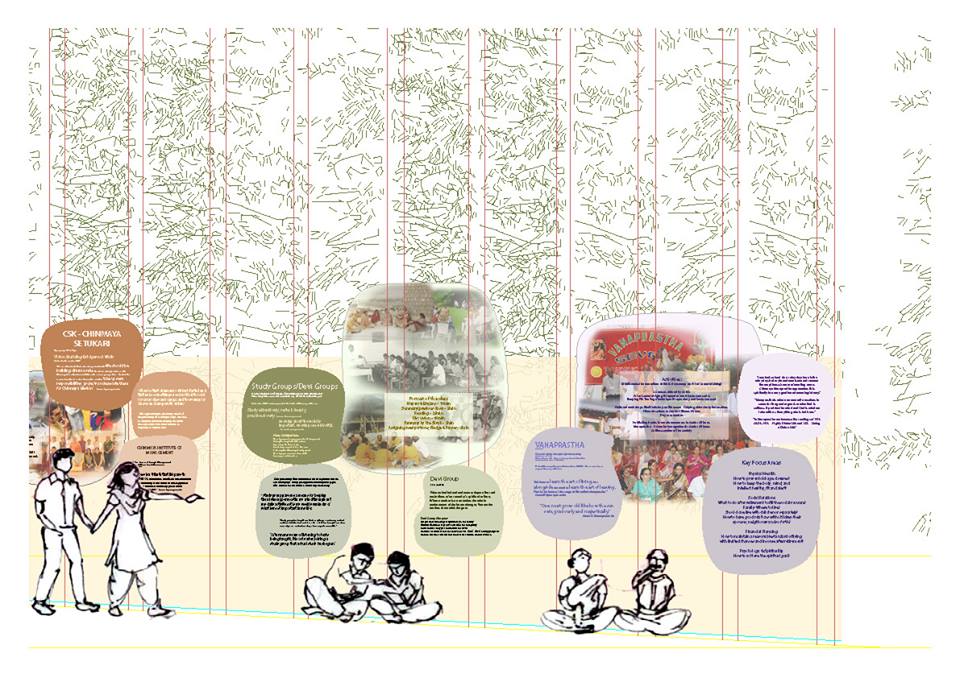
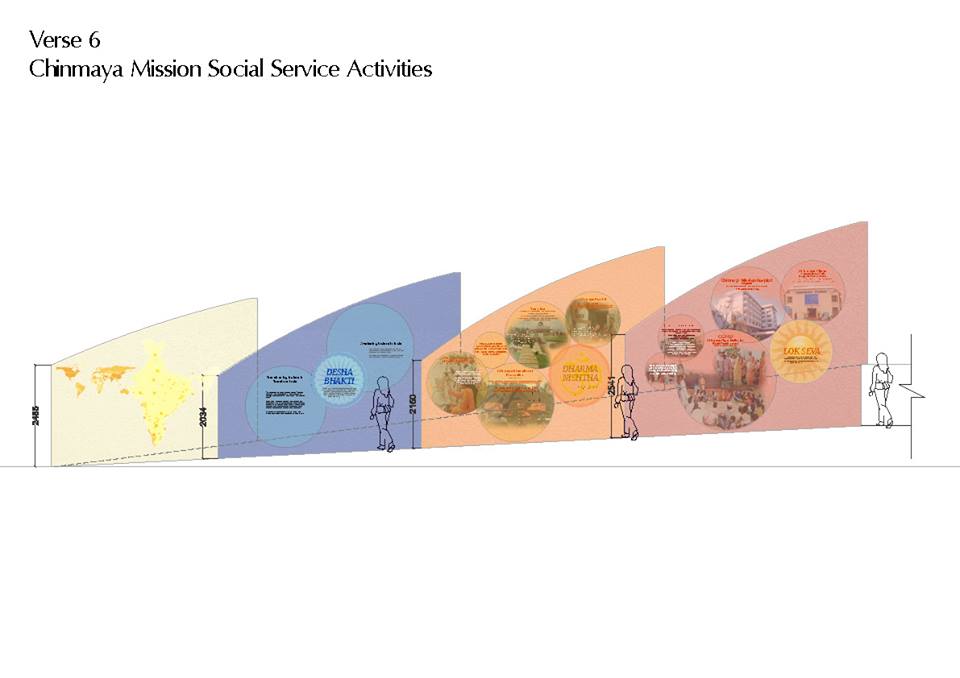
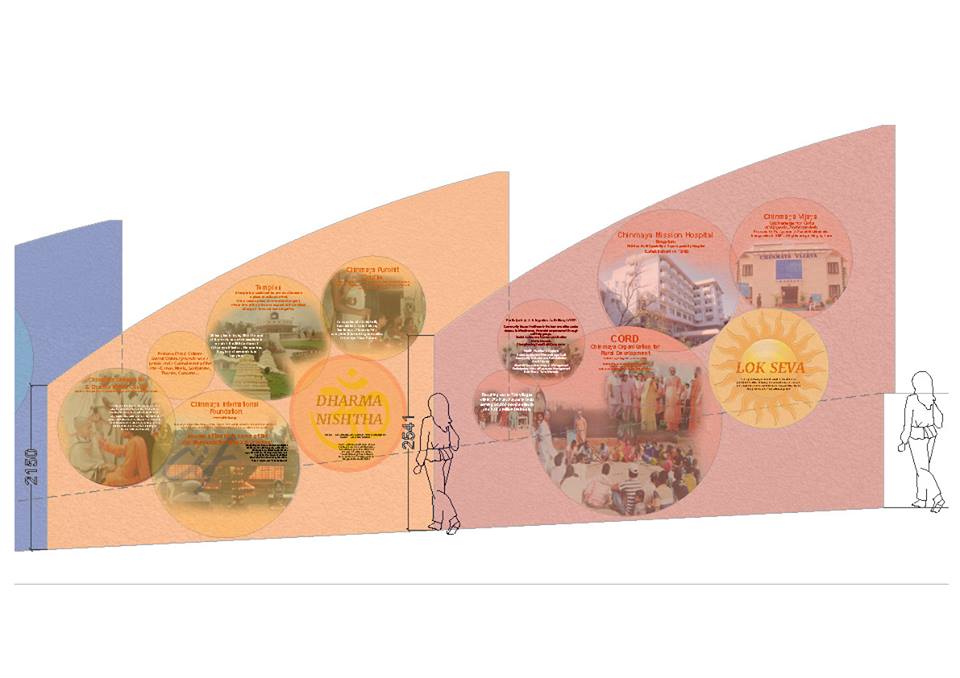
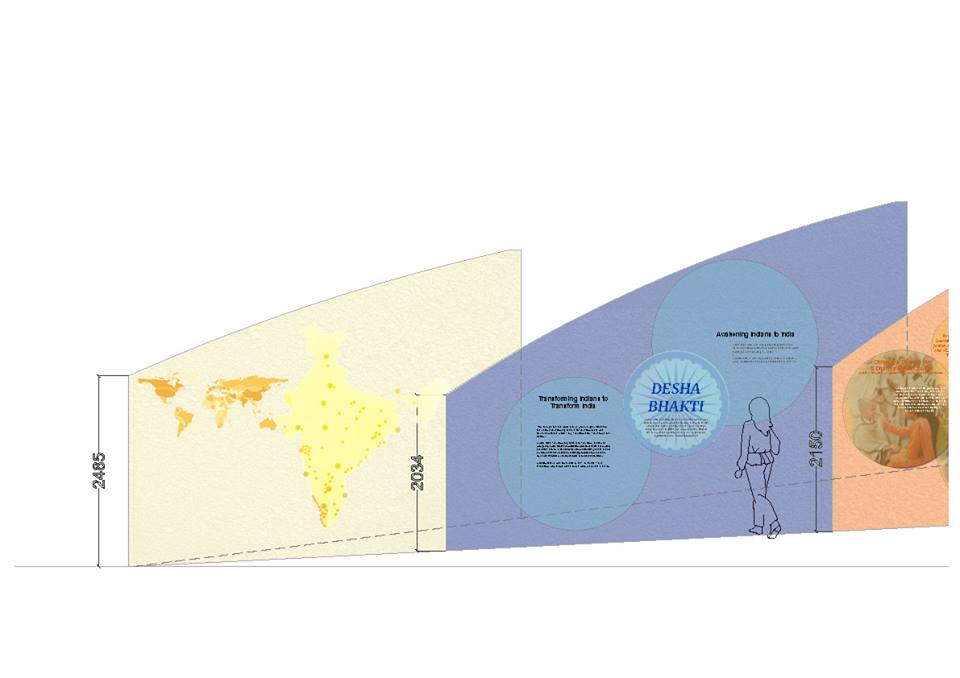
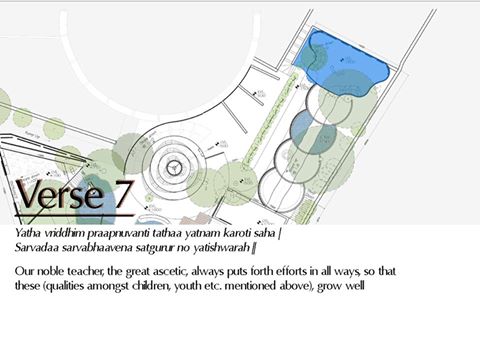
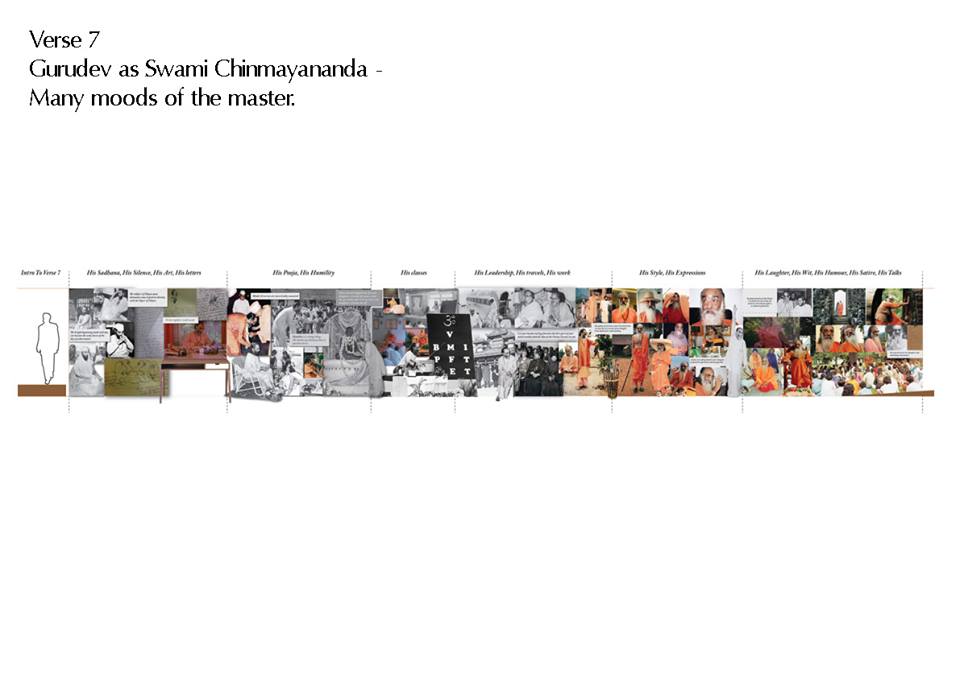

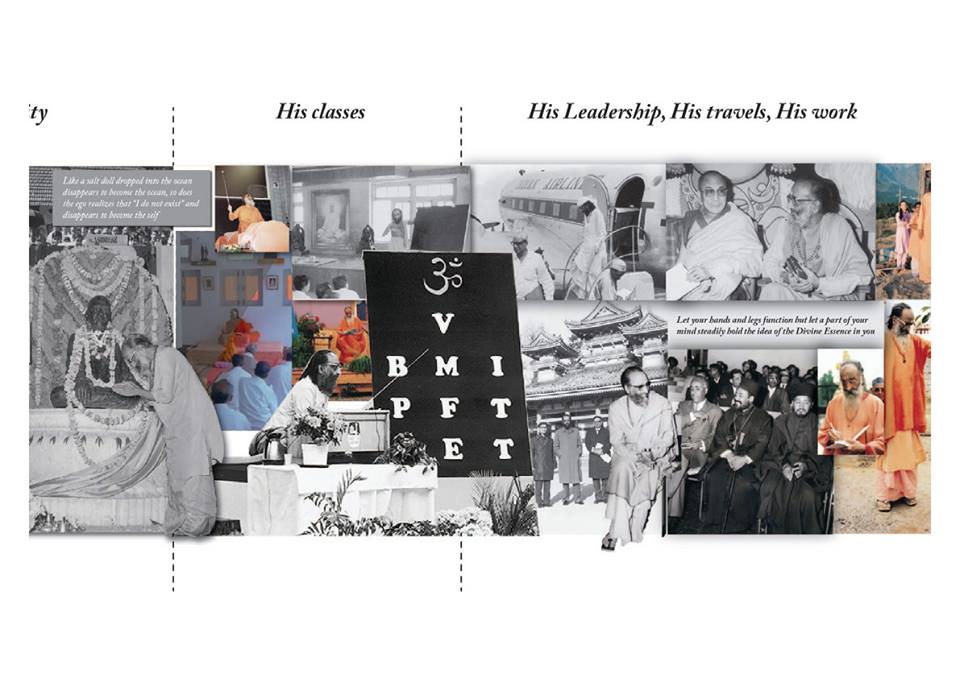
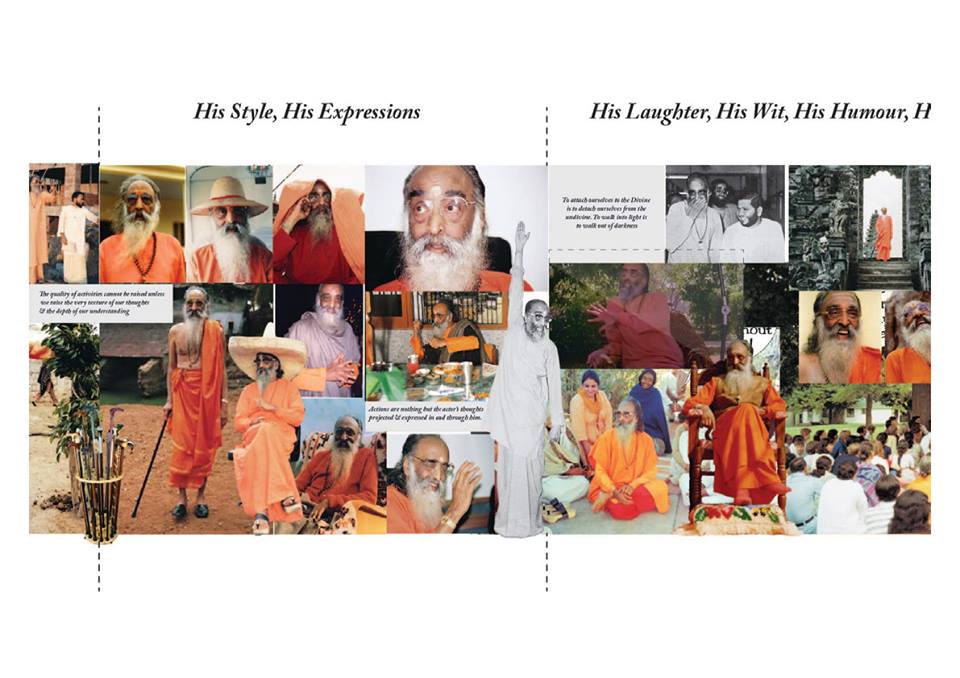
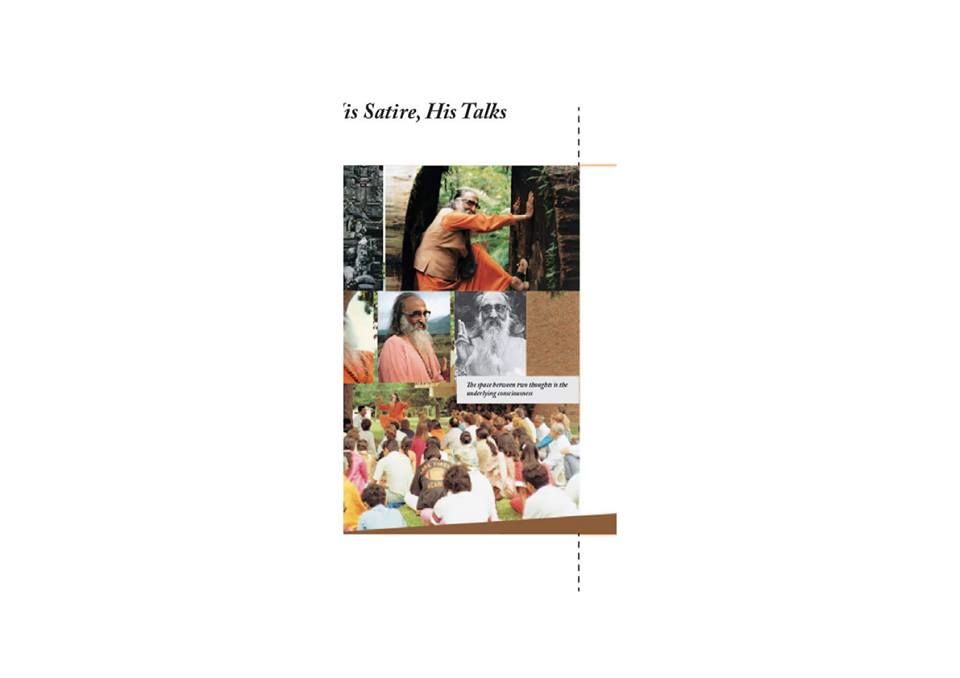
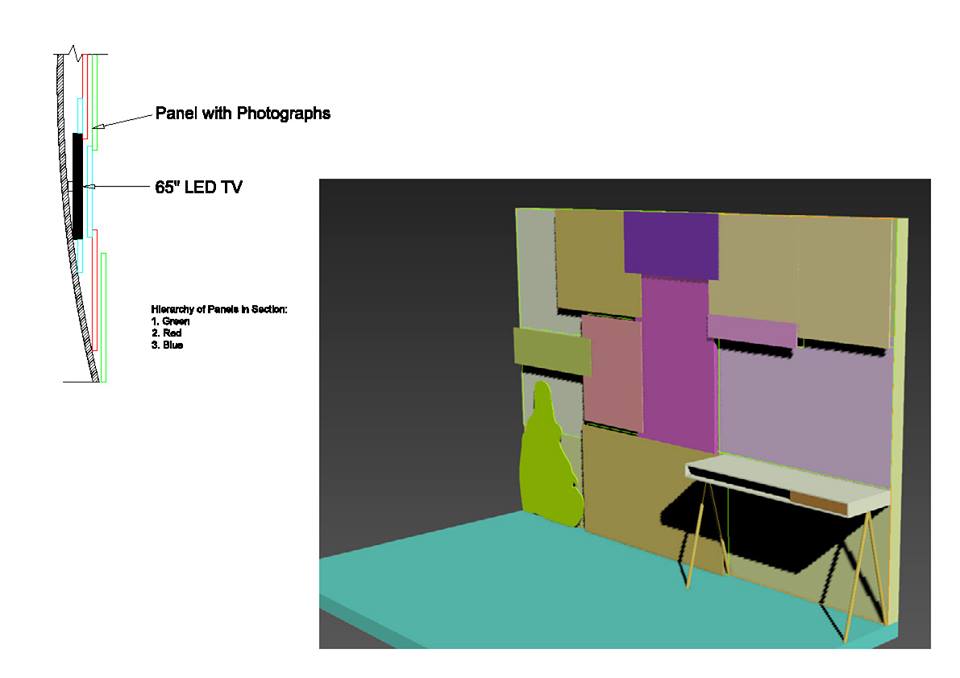
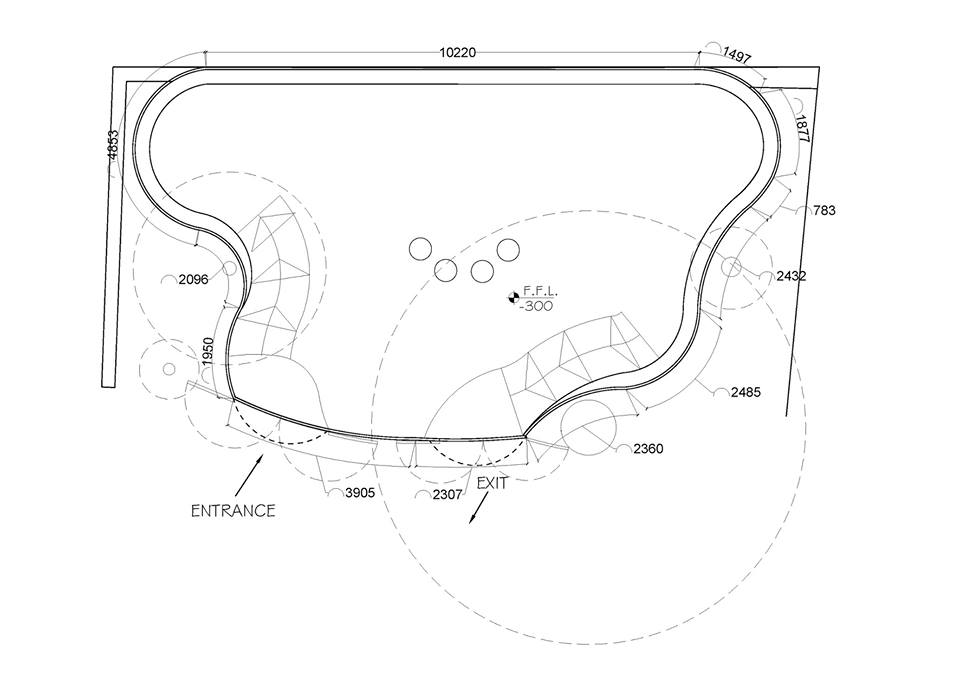



.jpg)
.jpg)
.jpg)


 Question 4: How does the Man of Realisation deal with various situations? The ocean is never disturbed inspite of rivers emptying themselves into it or gallons of water getting evaporated.
Question 4: How does the Man of Realisation deal with various situations? The ocean is never disturbed inspite of rivers emptying themselves into it or gallons of water getting evaporated.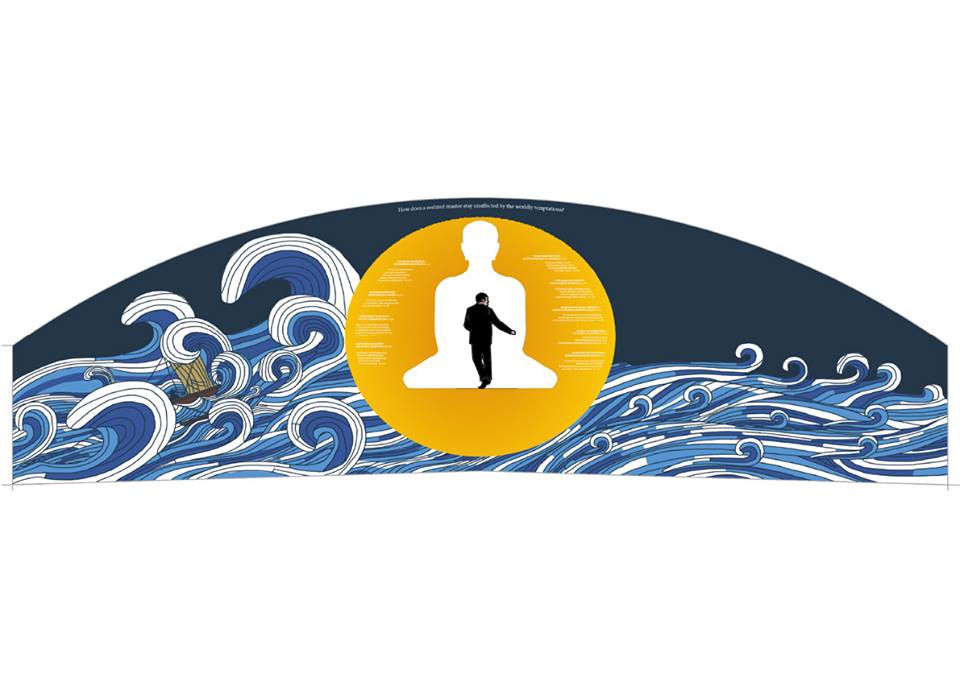


 We are grateful to the Lord that we came across a great Master like Swami Chinmayananda who fulfilled his life and taught us how to achieve fulfillment. It is by His Grace and the knowledge that he gave us that we are able to quiten the mind. Verse 10 describes this gratitude.
We are grateful to the Lord that we came across a great Master like Swami Chinmayananda who fulfilled his life and taught us how to achieve fulfillment. It is by His Grace and the knowledge that he gave us that we are able to quiten the mind. Verse 10 describes this gratitude.


 May we have more and more devotion to His Lotus Feet.
May we have more and more devotion to His Lotus Feet. 